This guide has everything you need to know about Digital Advertising.
Nowadays, it’s critical you become familiar with the latest digital advertising trends and strategies, or else you would be left behind.
Don’t worry! In this guide, I’ll deal with digital advertising essentials as well as advanced techniques. Once you’ve finished reading it, you would be such a digital advertising expert. Thus, you would be able to apply some of my proven tactics and succeed!
If you don’t want to be beaten by your competitors, you can’t miss out on the chance to be up-to-date as regards digital advertising.
Let’s get started!
Chapter 1
Digital Advertising Essentials
There are one thousand reasons why digital advertising matters these days. Among many others, due to the fact that most people spend loads of time using digital devices like laptops or mobile phones.
Thus, if you want to reach them and get your content viral, you will need to approach them wherever they are. So, whether you like it or not, you must become familiar with digital advertising.
In this chapter, I’ll focus on digital advertising essentials. That’s to say, I’ll explain what digital advertising is and how it works.
And then, I’ll provide you some data as regards the latest digital advertising statistics. To conclude, I’ll devote some lines to the importance of digital advertising nowadays.
Ready?
What is digital advertising?
Digital advertising is a promotion strategy that aims at reaching consumers online. It covers the whole process. That’s to say, from awareness to sale. More and more people search for products or services online.
Thus, if you want to catch their attention, you will need to run advertising campaigns on the internet. Indeed, not only do people search for information online and buy products, but they also use the internet to spend their free time.

In fact, many internet users do interact with brands online. For example, on Facebook, Twitter, YouTube, and more. Consequently, failing to advertise yourself online would be a mistake. The amount of time people spend online increases every year.
Anyway, digital advertising differs from organic traffic. The former includes a certain cost, such as CPC (cost per click) or CPM (cost per 1,000 impressions). Whereas the latter aims at gaining better rankings on search engines due to high-quality content and relevant keywords.
Moreover, digital advertising is on the rise nowadays. It’s pretty cost-efficient, and you can target specific audiences. Not to mention the fact that it is measurable in real-time, and it gets quick results.
How digital advertising works?
Digital advertising is used for advertising content, promotions, products, services, and more. Yet, what characterizes this type of advertising is that brands promote themselves on digital platforms instead of traditional channels like billboards.
Why does this matter?
It’s crucial you advertise yourself on those platforms your target audience spends most of their time in. Not any platform will work for you, nor do they have the same formats and specifications.
Thus, if you want to make the most out of your digital advertising, you need to do some audience research first. Once you become aware of which platform is best for you, you will need to decide on the type of advert.
Not all advertisements work the same, nor do they have the same effect on people. Depending on your creative ad campaign, budget and aims, some ads would be better than others.
The advantage of digital advertising is that it will allow you to increase your brand awareness no matter how big or small your brand is.
Important note:
The difference between traditional and digital advertising is not only that they use completely different channels, but that the effects of digital advertising are significantly faster.
Traditional advertising addresses the general public. Though, digital advertising is focused on a specific group. On top of that, there wasn’t a way to check where leads came from with traditional advertising. Though, digital advertising metrics provide you loads of information.
Digital advertising statistics to drive 2023
Given the fact that the time people spend online has significantly increased, it would be wise to focus on improving your digital advertising strategy. If you are still not convinced of how relevant it is these days, have a look at the statistics below!
- There was a 13% average increase in budget for digital marketing between 2019 and 2020. (Statista)
- 68% of all online experiences start with a search engine. (BrightEdge)
- Including a customer testimonial on a landing page can increase page conversions by up to 34%. (VWO)
- The average CTR for Facebook ads is 0.9%. (WordStream)
- Mobile app usage increased by 20% in 2020. (AppAnnie)
- Over 2 million businesses use Instagram advertising platform (Instagram)
- By 2022, Phil Gaughran (McGarryBowen) said, 80% of the advertising process will be automated (Adobe)
- Ad placement and audience targeting are the top ways that advertisers drive more demand. (Hubspot)
- Online ads can increase brand awareness by up to 80%. (WebFX)
- Customers are 70% more likely to purchase a product when a company utilizes retargeting. (TechJury)
Pro tip:
Keeping customer journey and customer experience top of mind will help you to provide a better service. Whenever you plan to run a new ad, it’s fundamental you think about how your audience would perceive it.
You should pay attention to your customers’ journey too. This way, you would be able to provide a greater UX. Thus, they would revisit your site and might order more products. Or they could even share your ad and support your brand in the eyes of others.
Chapter 2
How to Choose the Right Channels for Your Business
Choosing the right digital channels for your brand is critical. This would depend on your audience but also on the effect you want to cause. Not surprisingly, each channel has a specific format and several advantages.
Thus, in this chapter, I’ll help you to choose the right channels for your business. I’ll talk about digital display advertising, search advertising, social media advertising, and email advertising.
Then, I’ll stress the significance of remarketing and retargeting. And, I’ll tell you all about the latest digital advertising trends. Finally, I’ll devote some lines to programmatic digital advertising.
Given the number of ads available, you need to have a clear understanding to select which ones are best for you. Not all ads have the same format, nor will they reach the same audiences.
Indeed, each type of ad will help you to reach different audience groups. On top of that, there are several advantages and drawbacks you need to know as regards each type of ad. Let’s have a look at them so that you can make the most out of your digital advertising!
Digital display advertising

Display advertising is a digital approach that aims at drawing online users’ attention to take a specific action. It tries to reach people on social media platforms, websites, and any other digital mediums.
That’s to say, display advertising pretends to catch your audience’s attention with image, video, text-based ads, and more. In the vast majority of cases, it includes CTAs, which drive users to a landing page.
What’s more, display ads are great for any business since most of the time, you just pay if people click on your ad. Not to mention that you can use several types or just one, depending on your budget and audience’s preferences.
Different types
Whether to use one type of ad or another depends on your audience, but also on the channel you want to show them in. Each medium has different specifications. Only research and A/B testing will help you to make a wise decision.
On top of that, you might want to use different display ads in different campaigns depending on the audience segment you want to target and your goals. Below there is a list of the most well-known display ads:
- Banner ads.
- Native ads.
- Video ads.
- GIF ads.
- Interstitial ads.
Search advertising
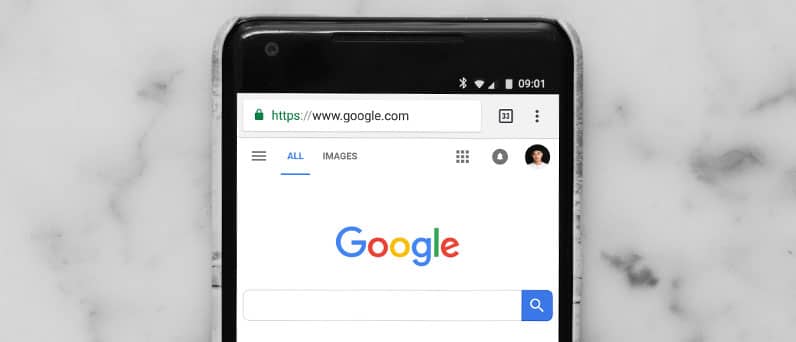
Search advertising is a marketing method that shows ads on search engine results. Brands that use these advertising campaigns just have to pay each time someone clicks on their ad. So, they are extremely targeted and cost-effective.
Among its benefits, it’s worth mentioning the fact that it will help you to boost your brand awareness quickly among search engines such as Google, Yahoo, and Bing.
Marketers who use search advertising display their ads in front of people who are already searching for particular keywords. This type of ad, most of the time, appears just below or above organic search results.
Different types
Not surprisingly, there are several types of search advertising. Depending on the type of audience you want to attract, you will need to use one or all types. The same is true for search engines.
I mean, whether you should display your search ads on one search engine alone or several search engines depends on your audience. You might want to appeal to worldwide audiences or very specific ones.
- PPC – Text ads.
- Google shopping ads.
- Dynamic search ads.
- Image and video ads.
- Call-only ads.
Social media advertising

Social media advertising is a promotion method that will give you benefits from day one. In other words, you won’t have to wait for people to type your keywords to see your ad. Social media ads appear on social networks with huge audiences.
As easy as it sounds, you will need to carefully choose which platforms are best to show your ads. This will depend on your audience. However, among its many benefits, one of the most significant advantages of social media ads is that it allows you to target specific audience segments.
It is a well-known fact that social media ads help you to engage with your audience and strengthen your relationship with them. Not to mention that your audience themselves can help you spread the word since they can share and support your campaigns.
Where you can put your ads on main social media
Which social media platform to use will depend on your audience. I mean, you need to do some research and become familiar with what platforms they like to spend their free time on. And most importantly, it would be helpful to know where do they interact more with ads.
Below, there is a list of the most popular platforms to display your social media ads:
- Facebook.
- Twitter.
- Instagram.
- LinkedIn.
- Pinterest.
- Snapchat.
- YouTube.
Email advertising
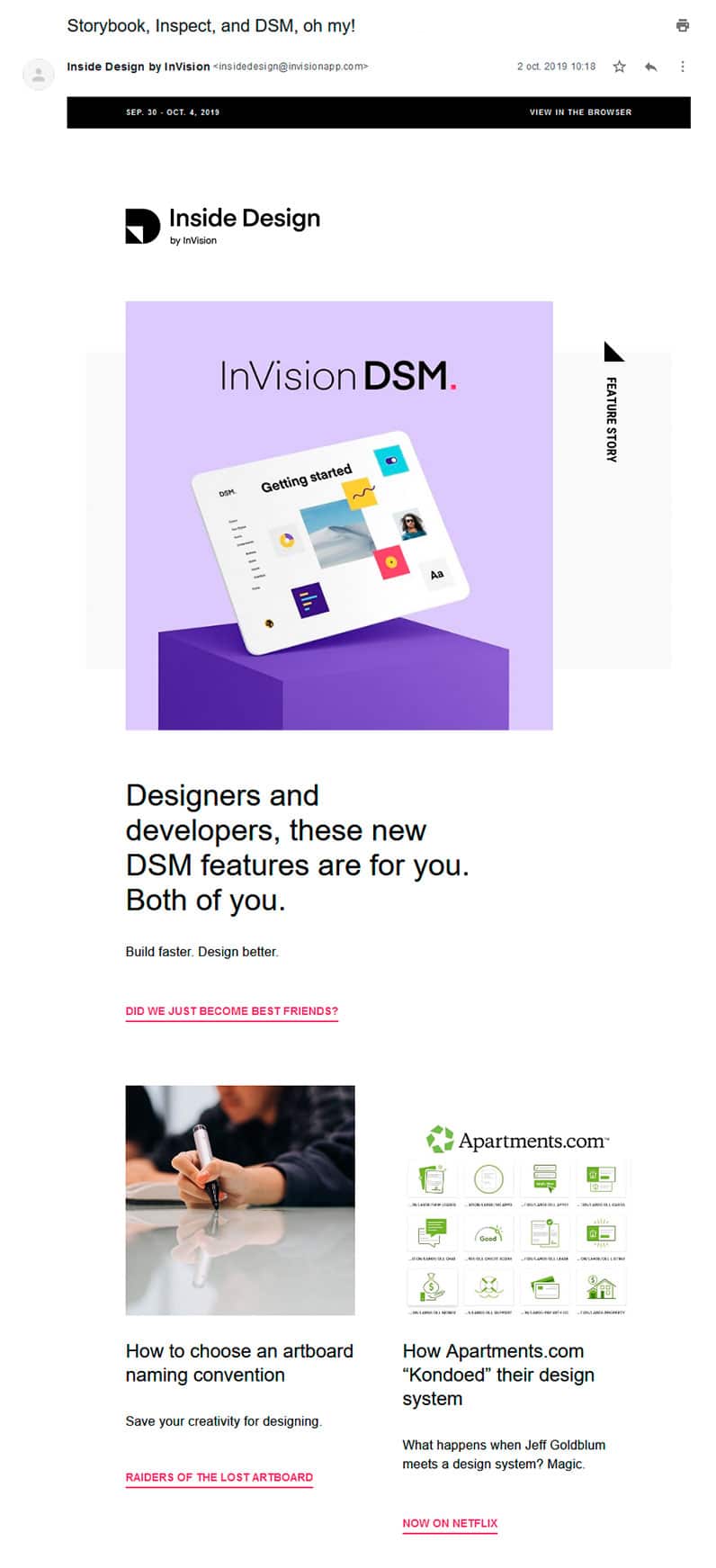
What is email advertising?
Email advertising is a marketing procedure that needs receivers’ consent. That’s to say, marketers create email lists to which their audience has already opted-in. That’s why email marketing is so efficient these days.
Apart from giving you the chance to send personalized emails to different segments of your audience, email marketing is no doubt affordable since you don’t need to spend on printed ads. Most adults have email accounts, and many admit to favoring emails as an advertising channel.
If combined with social media, email advertising can be really successful. You should include links to share email content on the emails you send. Besides, you can use social media networks to increase your email list.
Apart from personalizing your emails, you can use marketing automation to send them at the right time. So, you can divide your email list into segments with similar preferences and email them according to their likes. In fact, one of the benefits emails have is that it’s really easy to track their effectiveness.
Yet, among its drawbacks, it’s the fact that as time goes by, some people decide to opt-out. So, you must keep your contacts list updated. Some people do not open emails or classify them as spam. However, emails are still worth using.
Remember to ask your audience to opt-in, do not spam them, and assure them you won’t sell their email addresses. This will help you convince them to subscribe. Some marketers even provide something in exchange for emails, like taking part in a contest.
Important note:
Mobile digital advertising is a little different from desktop advertising. Both of them are necessary, but the ads are not the same due to the screen size, for instance. So, you will need to optimize your ads and adapt them for both devices.
Indeed, mobile digital advertising is more effective these days as there are more mobile owners. So, it’s easier to target mobile users since you can provide more personalized ads.
Don’t forget that video ads are more widely seen on mobile devices. Thus, it’s mandatory they’re not too long. Not to mention the fact that in mobile advertising, you need to ask users to opt-in to receive data, while for desktop ads, it’s not always necessary.
Remarketing and retargeting

What is remarketing?
Remarketing aims at reactivating consumers intends mainly through emails. That’s to say when visitors to your site start an action like place an item in the cart but never complete it.
Remarketing happens when you send an email to remind them how great your product is. Such a reminder tends to go accompanied by further motivation like free shipping or a discount.
You can even create a sense of urgency. For example, the offer will expire soon, or there are only a limited amount of units in stock. Not surprisingly, you will need a catchy subject line.
If you convince them to open the email, there are lots of chances they complete the desired action soon. In general, remarketing emails are highly effective since consumers have already shown interest.
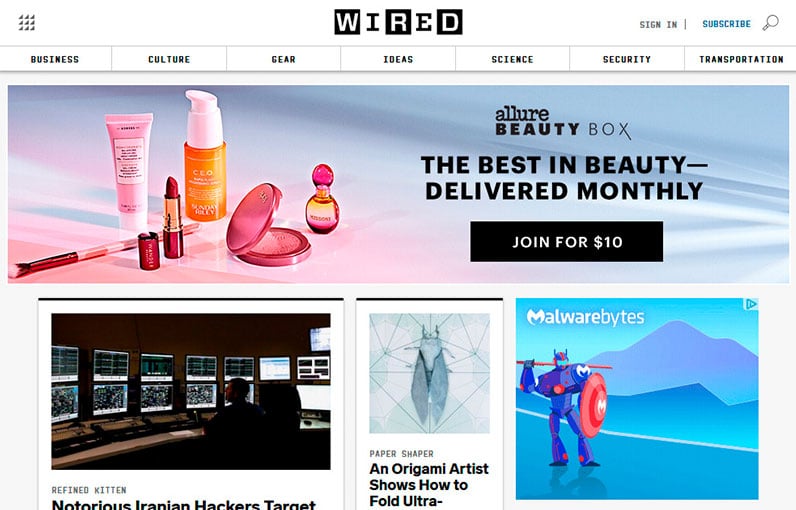
What is retargeting?
Retargeting is a tactic that aims at re-engaging visitors to your site through ads. These ads are shown on other websites or search engines. So, once your website visitors have interacted with your site and left, you retarget them somewhere else.
The ads’ goal is to drive visitors to your website again so that they can carry on interacting with your site. Retargeting ads could be sent due to various reasons. For example, you can use them with users who have been on a website that is similar to yours or due to user history of searches, and more.
You can either retarget users off-site or on-site. Whether you should use one or the other depends on your goals. Most of the time, retargeting is used to catch users’ attention and interest.
If you retarget off-site users, you will do so based on their keywords use on search engines, for instance. While on-site retargeting happens because visitors leave without taking the desired action on your website.
Note:
Both remarketing and retargeting have pros and cons. There is not one that is better than the other. They simply work better depending on several circumstances. Yet, you need to know what they are so that you can make the right choice.
The difference between remarketing and retargeting
Retargeting means that you target a specific group of your website visitors again. These are visitors who abandoned your site without completing the desired action. So, retargeting means that you try to convince them by means of showing them ads on other sites they visit.
Although they’ve got some similarities, like trying to revive consumer engagement, retargeting and remarketing differ in many aspects. Remarketing differs from retargeting not only in the channel (usually by email) but also in the user’s interest.
Remarketing happens when you send consumers an email after they’ve shown interest in one of your products but never finished the transaction. They might have got distracted or were not 100% convinced.
So, in remarketing, the idea is that you remind them how interested they are. It’s common to provide some incentives to make sure they end up taking the desired action. For example, they return to your site and buy the product which was on their cart.
Whereas in retargeting, users don’t necessarily have shown any interest in buying before you show them ads on other sites. Nor is it common to offer special promotions to convince consumers to go to your site.
In retargeting, you show an ad repeatedly, hoping to convince users to go to your site. And once they are there, order a product or hire a service, but they haven’t shown their interest in doing that beforehand.
Digital advertising trends in 20230

The world is constantly changing, and so does digital advertising. There are many innovations due to technological advances. Still, many aspects keep on growing as predicted. And others remain the same.
Below, I’ll explore the most relevant trends for 2023. I’ll tell you all about the latest digital marketing techniques to succeed. Don’t miss the chance to be informed and beat your competitors. Let’s peek inside it!
Digital marketing will expand
Digital marketing is supposed to carry on growing this year and the years to come. This growth will go hand in hand with speed. I mean, the speed at which new products can be created to help consumers with their needs.
This might be easy if companies partner with social networks since they have at their disposal loads of data as regards users’ preferences. If brands take advantage of this data, they can do wonders to please their audiences.
Artificial intelligence is on the rise

Artificial intelligence is here to stay. It has significantly improved since it first appeared. Now, it’s more difficult to differentiate between machines and humans. This means that we will continue using robots to help us.
These “robots, apps, machines, platforms, etc.,” have many advantages as regards humans. They are always available to help us, they don’t get angry even when we annoy them, they have a great memory, and more.
Voice search
Voice searches are more common every day due to mobile users. Digital advertising cannot ignore them. So, this means that you will need to take into account voice assistants when choosing your keywords.
Either Siri, Alexa, Google, or any other voice assistant uses conversational language. So, if you want your content to be found, you need to bear this in mind. Remember that most people ask questions, so this matters too.
Private messaging apps

More and more marketers are starting to use private messaging apps to communicate with their customers. The truth is that apps such as WeChat, Viber, or WhatsApp are already being used to communicate instead of emails.
These apps are trendy as they allow you to share data in real-time, and they foster relationships and brand awareness. Not to mention the fact that some of them even allow users to pay online like PayPal, Venmo, or WeChat.
Many brands will keep on using chatbots
Like voice assistants, chatbots are a form of artificial intelligence. Many businesses use them nowadays to answer their audience queries on their sites, for instance. Among its benefits, it’s worth pointing out that they can communicate with users in real-time.
Besides, they are cost-effective and can offer much more personalized treatment. Visitors to your website will appreciate not having to wait for their questions to be answered while they can carry on browsing on your Web pages.
Personalization

This year a lot more companies are expected to use personalization in their digital marketing campaigns. The truth is not many companies are offering a completely personalized service. However, this is what many users expect.
So, if you want to improve your benefits, you need to focus on personalization. I mean, not only using your customer’s names on their emails but offering them products you think they might like based on past purchases and more.
Customer retention is gaining importance
Getting new customers is great, and you need to do your best to reach new audiences. But, it’s also important to retain your customers. The latter could do business with you again in the future. You will be able to gather reliable data from them.
What’s more, it’s cheaper to retain customers than to gain new ones. Not to mention that past customers can recommend you to the people they know if they’re happy with your brand. So, it’s worth drawing them the attention they deserve.
Consumer privacy has to be guaranteed
These days, more relevance is being given to consumer privacy. You must be transparent with your customers and assure them you won’t use their personal information to sell it to databases.
Instead, you need to convince them the information they allow you to collect will be used to offer them a better user experience. Otherwise, people would stop providing personal details to brands. I don’t blame them. No one likes to be spammed all the time.
Note:
Programmatic digital advertising is somehow a method to automate the buying process of digital campaigns. This way, you won’t need people to negotiate with one another. AI will do it for them. Thus, they could better use their time and energy to improve advertisements.
Were you to use programmatic digital advertising, you would increase both the transparency and efficiency of the process. It normally happens through real-time auctions while users are already browsing a website.
Now you are ready to choose the right channels to advertise both your products/services and your business. I hope you have found this information useful.
You wouldn’t be able to make a great choice unless you knew what digital display advertising, search advertising, social media advertising, and email advertising are.
Remarketing and retargeting are essential too. Any of them can help you convince those visitors who left your site without taking the desired action. Besides, being familiar with the digital advertising trends of this year is mandatory.
Thus, you can move on to the next chapter, where I’ll talk about how to develop your own digital advertising strategies. Sounds interesting? Keep on reading!
Chapter 3
Create Your Digital Advertising Strategies
Developing your own digital advertising strategies is key to success. What works for some brands doesn’t necessarily have to work for others. What’s more, if you want to beat your competitors, you’d better be original.
In this chapter, I’ll show you how to create your digital advertising strategies. First of all, you need to know what a digital advertising strategy is. Then, I’ll focus on advertising research and its relevance these days.
To conclude, I’ll devote some lines to how you can craft your advertising strategy. So, I’ll talk about audience targeting and how to make the most out of your budget. Ready?
What is a digital advertising strategy?
A digital advertising strategy is a plan that somehow helps you to achieve your goals, whatever they are. For example, attract more qualified leads. This can only be done by means of thoroughly choosing the right online channels for your brand.
Normally, you will need to use more than one channel, including paid, earned, and owned media. Though, in most cases, all of them are used to support the same advertising campaign. It is with several campaigns that you can reach your goals and fulfill your strategy.
But, what do you need to include in a digital advertising strategy? To begin with, you will need to define your buyer personas. Then, you’ll have to establish your goals and think of the tools and resources you need to achieve them.
Besides, you should also analyze your marketing campaigns (owned, earned, and paid media). And then come up with a plan. Do not forget to review and optimize your plan as needed.
Advertising research
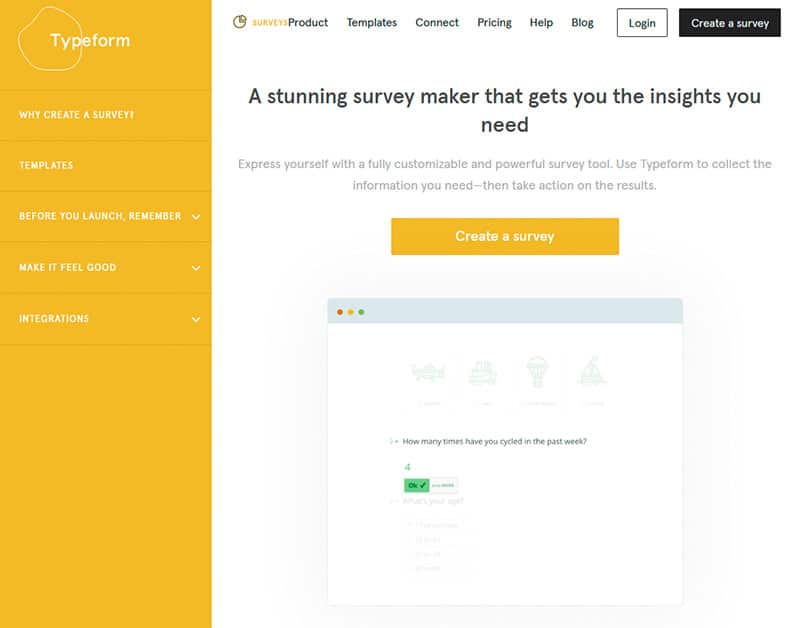
Advertising research aims at improving your marketing strategies and your digital marketing campaigns. But, when should you carry out advertising research? Well, at least before and after each marketing campaign.
On top of that, it would be wise to do some research once you’ve launched a campaign. Just to check if it is going in the right direction and having the desired effect.
Before you start an advertising campaign, you will need to try to understand your audience. Think about your customers and prospects and their needs. This way, you’ll be able to target several audience segments within the same campaign.
You can collect data through surveys, customer reviews, Google Analytics, keyword research, blog comments, social media, and more.
Once the campaign is over, it’s key to analyze its effectiveness. You should pay attention to your website analytics and check where the traffic came from, for instance.
You can also check the volume of mentions on social media platforms, news coverage, sentiment, reach, engagement, purchase intent, etcetera.
Advertising design research

Advertising design requires some market research so that you can better understand the behavior of potential customers. Once you’ve defined your buyer personas, you will be ready to generate a creative design.
Even though you probably won’t have a lot of concise information during your ad’s creative phase, you must do some research. I mean, you should A/B test with different ideas before deciding on the final work.
However, you must be very careful with deadlines and the budget. That’s why research during the designing phase is so critical. That’s to say, if, for whatever reason, you don’t finish some of the ad phases on time, this would affect the others.
Likewise, if you spend too much on the design of an idea, this would be to the detriment of other parts of the ad’s design. So, checking things in advance is of utmost importance. This won’t only save you time, but it will also prevent unnecessary issues.
What is competitor analysis?
Competitor analysis is research you cannot miss out on. Its goal is to collect data from your competitors and use it to your benefit. In other words, knowing your competitors’ strengths and weaknesses can help you to develop a better advertising strategy.

First, you will need to identify your major competitors. And then, you should both analyze and compare their content with yours. You might want to check blog posts, press releases, videos, podcasts, FAQs, and more.
Moreover, you may well pay attention to their SEO practices. That’s to say, you can observe how often they post content, for instance. And, their website and social media are worth monitoring too.
Once you have collected all this information, you will probably know what’s what they are doing better than you. These are the areas you need to keep an eye on from now onwards and make an effort to improve. You could also take advantage of their weaknesses if you find any.
What is keyword research?
Keyword research is the process by which you look for keywords related to your website. It aims at selecting those keywords which would give you the best ROI. Since search engines rank Web pages according to their keywords, you must do some research.
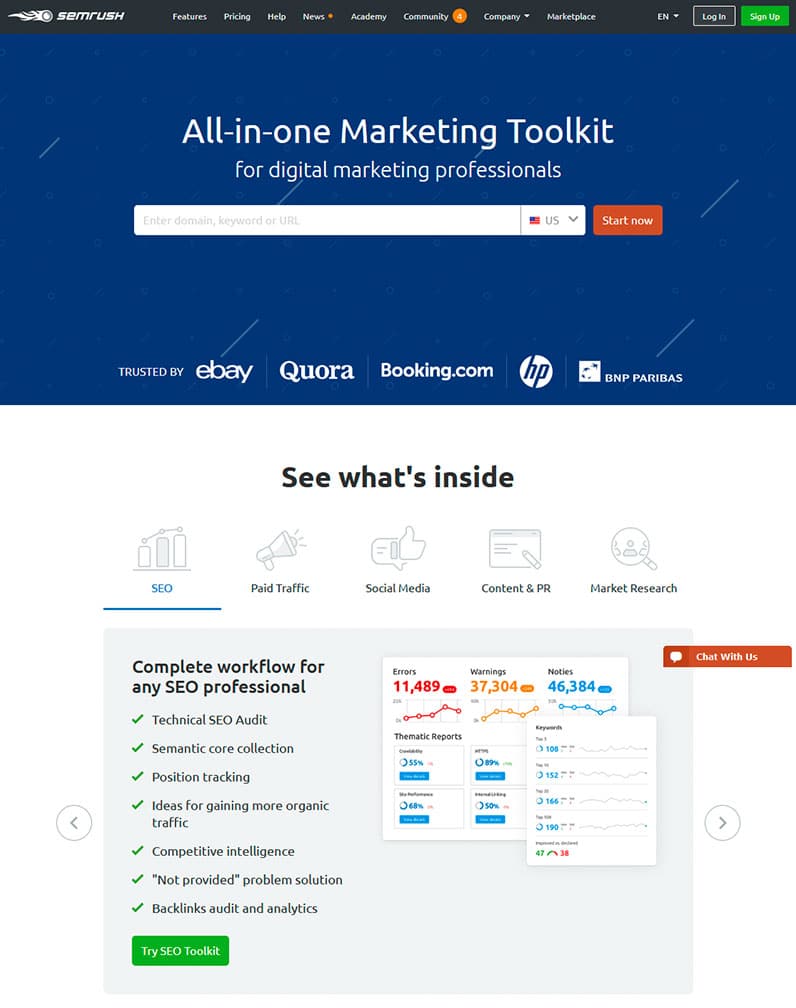
Not surprisingly, not any keyword works well. If you choose highly competitive keywords, it will be complicated to rank high. But, if you use keywords nobody is looking for, search engines won’t help you get traffic.
So, apart from choosing keywords related to your website content, your products/services, and more, you should pay attention to long-tail keywords. These might not be so popular, but they are more specific. So, chances are they will help you to get visitors.
It is advisable to use tools such as Google AdWords Keyword Planner or SEMrush to help you find relevant keywords. Think that users won’t use the same vocabulary you use to define what you sell. You will probably utilize complicated terminology.
It’s also relevant to mention that more and more people search for keywords using questions. So, you might benefit from including them among your keywords. And finally, if you want to get prospects near where you live, you have to include your location in your keywords.
Social media research
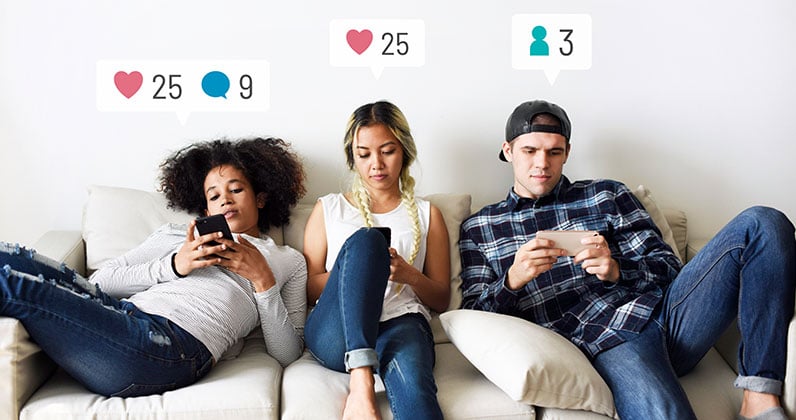
Social media research refers to analyzing social media platforms to compile information and use it to improve your digital advertising strategy. Since many Internet users spend lots of their time on social media channels, it’s worth analyzing this data.
Thanks to social media research, you would be familiar with the latest trends, consumers’ opinions, get to know potential influencers, and more. Believe it or not, social media channels are a powerful source to either boost or ruin an advertising campaign.
So, you must pay attention to what people are saying about your brand and products. You can also use social media platforms to check what your competitors are doing, to interact with your audience, and so on and so forth.
But, most importantly, social media platforms are an excellent resource to collect data. Users share many personal details, what they like or dislike, where they live, and more. Thus, you can use this data to create more specific and personalized advertising campaigns.
Effectiveness research

Whatever strategies you decide to follow, whatever campaigns you run, it’s vital to check their effectiveness once they’re over. How would you know if the efforts you made were worthy if you don’t measure them?
You don’t need to wait till an advertising campaign is over to check if it’s working. Yet, it’s crucial you do analyze its acceptance when the campaign has finished. This will help you to discover weaknesses, so you will be able to work on them.
Likewise, understanding your strengths will help you to enhance them. You will probably need to use different strategies for different campaigns. But, if you know what works, you will save time and energy that you could use to improve your ads.
How to craft a digital advertising strategy
Crafting a digital advertising strategy is essential. Not only is it important due to the fact that many people spend time online, but it is also crucial since there are lots of possibilities available. In other words, digital advertising can be complex if you don’t know your audience.
Indeed, you would have a specific budget to spend on digital ads. It is believed that marketers are increasing the amount of money they spend on digital advertising. Still, you cannot cover everything.
Even if you could afford it, it would be worthless to use channels your audience doesn’t pay attention to. Thus, you need to develop a plan to make the most out of your digital advertising efforts. Let’s have a look at some critical steps to follow!
1. Set your goals

Before you can start planning your strategy, you’ll need to set your goals. You will probably have several goals such as increase your sales, get X number of likes or shares on social media networks, and more.
Whatever your goals are, it’s fundamental you know them. In fact, you should distinguish between those which can be obtained soon and those which would come in the long-term. You should also know which of all your goals are more important for your brand.
What’s more, goals are what will help you check the effectiveness of your strategies and your advertising campaigns. You must start with goals you can achieve as it’s discouraging if you never reach them. Likewise, if they’re too easy, motivation won’t be high.
2. Define your target audience
It comes as no surprise that you need to know your audience to reach them better. Indeed, becoming familiar with your current customers is not enough. You should also think about those who you would like to have as customers.
The best way to understand your audience is by means of developing buyer personas. These are imaginary customers you might have. They have to be different, each of them representing a segment of your target audience.
You should have data regarding who they are, where they live, what they do, their gender, their age, and more. Besides, it’s helpful to know how they speak. As the language they use to talk about your products or services is not the same you use to describe them.
The best way to know your audience is to listen to them. You should try to make an effort to know their pains and do your best to solve them. Learning about your audience will also help you target them where they are online. This way, boosting your efforts.
3. Develop a customer journey map
by DigitalMarketer
It would help if you defined your customer journey map. This one starts with your customers’ awareness of your brand and products. Then, you must convince them to think you are the right choice. The last phase is when they actually convert to customers.
The more you understand this process, the better informed you will be. And, as you may well know, information is power. Becoming familiar with your customer journey map can make a difference in planning your digital advertising strategies.
4. Find out what channels work for you
Likewise, it’s mandatory you discover what channels work for you. How would you know that? Finding out those channels which your audience uses. It could be the case that if you look at your audience and its several segments, they use more than one channel.
That’s fine, it’s what we already expect. So, you will need to use both paid and organic advertising on those social networks they use. However, if you know there are other platforms they don’t use, you don’t need to waste your budget targeting people there.
As there are more and more channels every day, it’s fundamental you select the ones that matter for your brand. Those would be the ones your audience interacts with.
It’s worth considering that your most relevant channels are not only the ones in which your audience is active but also the ones in which they engage with ads and their brands.
5. Come up with a calendar

Any great digital strategy should go hand in hand with a calendar. This one might include deadlines, industry events, meetings, who is in charge of creating and posting content, and much more.
Likewise, this calendar will serve you well during the advertising process. I mean, since you have the first idea of an ad, till it becomes a real ad. You can monitor all the process thanks to a calendar. This way, you’ll make sure everything is done on time.
Interested in downloading a marketing calendar? Want to know how to manage yours if you already have one? Read this complete marketing calendar guide to find out more information.
What’s more, a calendar could also help you to manage your social networks. You will probably have more than one. Yet, they have different formats and specifications. Thus, a calendar would help you to analyze and check everything is running as it should.
6. Build a content strategy
Content creation is gaining a lot of importance. Online users value high-quality, long-format pieces of content. Yet, you must favor quality over quantity. Above all, you need to discover what issues your audience wants to know about. And then, write about that.
For instance, if you notice they frequently ask you the same questions about a particular topic, it would be wise to write about this topic and share it with them. If you post it online, it will serve them well. You can even attract new clients because of that.
Content creation not only helps your audience but also attracts visitors to your site and increases brand awareness. Try to post interesting and creative pieces of content. You could later share them and ask others to share them on social networks. Who knows, you might get it viral!
7. Watch out your resources – plan according to them
by Philip VanDusen
Obvious as it may seem, many brands fail to plan according to their resources. But, if you want to get the work done on time and succeed, you must take your budget into account, for example.
Indeed, the budget is not the only factor that affects an advertising campaign. You should also bear in mind your staff and their capabilities. If you want to get successful outcomes, you need to be realistic.
Similarly, controlling your budget is not only advisable but detrimental. Consider that if you spend too much on one part of the advertising phase, you would have to cut down expenses on another one. It could even make the campaign fail.
8. Check and monitor effectiveness
The last strategy you need to focus on is to check whether you have achieved those goals you defined at the beginning. Each platform has its own analytics, and you could also use other analytics tools outside them.
Still, knowing your goals will help you find the data you need to analyze. You could later use this information to improve your digital advertising strategies. Not to mention that if you find any issue, you would be a little closer to solving it.
And, that’s all for digital advertising strategies. Remember that advertising research is fundamental to success. So, don’t rush yourself and devote some time to keyword research, competitor analysis, social media research, and more.
Crafting a digital strategy is not that easy. Yet, if you follow my proven steps, you won’t have any problem creating your own strategies and succeed. Want to know more about digital advertising? You can’t miss the next chapter, where I’ll deal with display network advertising.
Chapter 4
Display Network Advertising
Display network advertising can bring you loads of benefits. But, if you want to take advantage of it, you will first need to understand it. Its results and effectiveness will depend on your objectives and the strategy you take to achieve them.
In this chapter, I’ll tell you all about display network advertising. I’ll cover from what it is to why you should use it and its main benefits. Not surprisingly, I’ll explain display network advertising types in more detail.
And then, I’ll show you how to increase the effectiveness of your display network ads. Thus, I’ll provide some proven tips, and I’ll help you grow your remarketing list.
What is display network advertising?
Display network advertising refers to all those paid ads that can appear on strategically chosen websites, social media platforms, and apps. Its aim is to call the attention of a specific segment of your audience so that they later take a desired action.
There are several networks where you can display your ads on. Being Goggle, Facebook, Twitter, Instagram, and YouTube the most important ones. Whatever the network you use, you will need to set your goals. And then, using keywords, audience demographics, topic, interest, placements, etc., let the network work for you.
Display network advertising works by means of showing your display ads on other websites and social media apps to others. You only pay if people click on your ads. It is highly effective in the case of remarketing as users have already shown some interest.
Indeed, you can either use display advertising to target those who left your site without purchasing or to target people with similar interests. The latter tends to be practical too, since if the audience you’ll target has similarities with yours, they would probably be interested in what you have to offer.
The purposes of digital network advertising

There are many reasons why you should put into action digital network advertising. Indeed, you can put into place campaigns for various purposes. You’ll find them explained just below!
Brand awareness
One of the most well-known display network advertising purposes is to increase brand awareness. Such a campaign will take a while to be effective. So, you need to make sure you have enough budget.
A brand awareness campaign aims to reach a wider audience. Still, the objective is not that they take the desired action. But that they get to know you as a highly respected brand. Some of them will convert, of course, but that’s not the main goal.
A brand awareness campaign could be easily measured by means of metrics like reach, impressions, and engagement. If you launch your campaign on social media networks, your audience will help you reach more people.
Retargeting
Another purpose of display network advertising is retargeting. This is probably one of the most profitable purposes. Mainly because, as the word says, retargeting aims at re-engaging with users. It could be users who have already visited your page due to audience similarities and more.
If you decide to run a retargeting campaign, you will first need to create an audience list. This list should clearly differentiate several segments of your audience. If you retarget others according to their preferences, you have more chances to succeed.
Once you have your list, you just have to create several ads appealing to your audience segments. Those ads would follow them to other sites, apps, and more. The odds are they will be convinced to return to your site and fulfill the desired action.
Acquisition
Display network advertising campaigns which aim at the acquisition of new prospects are a little bit more complicated. This doesn’t mean they don’t work; they do. But, you’ll have to manage and analyze all the campaigns properly, or else you would end up spending a lot of money.
Depending on the type of ads and the channel you advertise them, there would be significant differences. Still, in the case of banner ads, it’s complicated to get quick results. Not only because people have developed a skill to avoid them, but also because they can be blocked.
However, it’s true that, if done well, acquisition campaigns can help you get conversions. It would be wise, though, to check how much these conversions cost you. You can easily measure that by comparing what you’ve spent with what you’ve earned from display network ads.
Why should you use display network advertising?
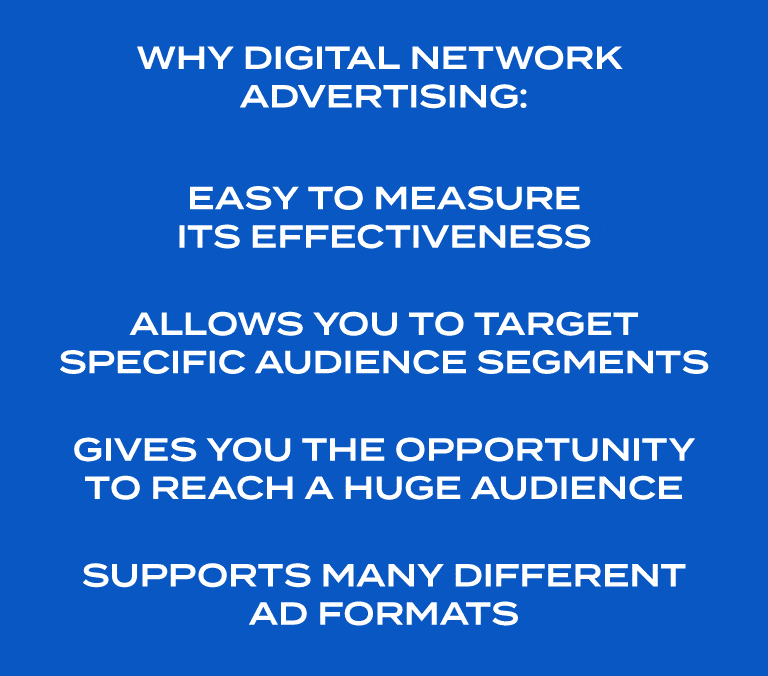
To begin with, display network advertising gives you the chance to create many different ad formats. This matters because you can choose the format that best adapts to your audience’s preferences.
Digital display advertising is also well-known due to the fact it helps you to increase your brand awareness and loyalty. But, it also increases the number of people you can reach. In other words, when showing an ad on social media networks, you can engage with loads of users.
Besides, one of the features of display network ads is that you can target specific audience segments. And this is critical in advertising. The more concrete your ad is, the more chances you have to get conversions.
Finally, it’s worth commenting that digital display advertising is quite easy to measure. Whatever the channel you use to advertise your ads, there would be certain metrics you would be able to analyze, like engagement.
Benefits of display network advertising
- Easy to measure its effectiveness
- Allows you to target specific audience segments.
- Gives you the opportunity to reach a huge audience.
- Supports many different ad formats.
Types of display network advertising
There are many display advertising formats. Whether you should use one or the other depends on two facts: your audience preferences and your goals. In fact, many brands use more than one format depending on what they want to achieve and their budget.
Let’s have a look at each of them!
Banner ads
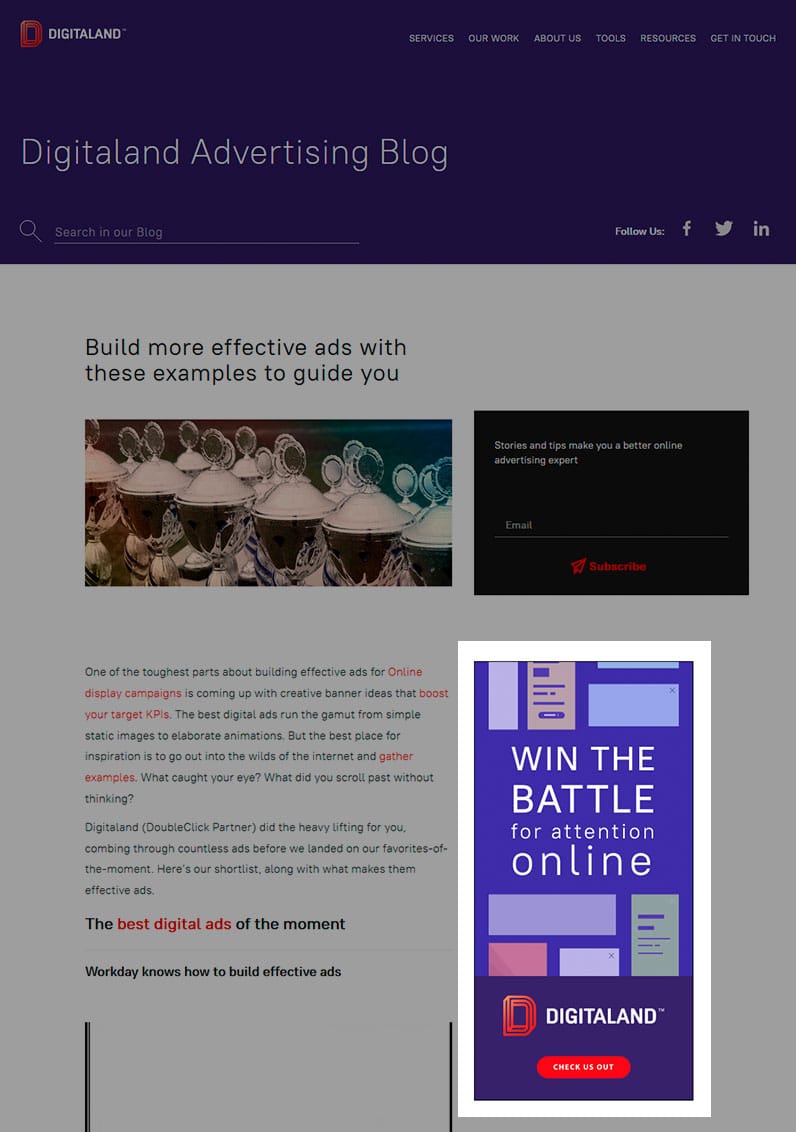
Banner ads are those rectangular display ads that appear either at the top, bottom, or sides of a website. They are usually image ads that aim at promoting a brand or getting visitors to a brand’s website.
Not surprisingly, these ads are placed on highly visible spaces in high-traffic websites. Besides, there are several paying methods. You can use pay per impression, pay per click or pay per action.
Which of these methods you should use depends on your goals and your budget. These days, banner ads use programmatic bidding. That’s to say, companies bid for ad space during the time it takes to load an ad into a website.
Yet, there are some disadvantages regarding banner ads, like most people seem to have generated a certain ad-blindness and ignore them. Although, they can still be highly effective if you develop a good banner ad strategy.
Native ads
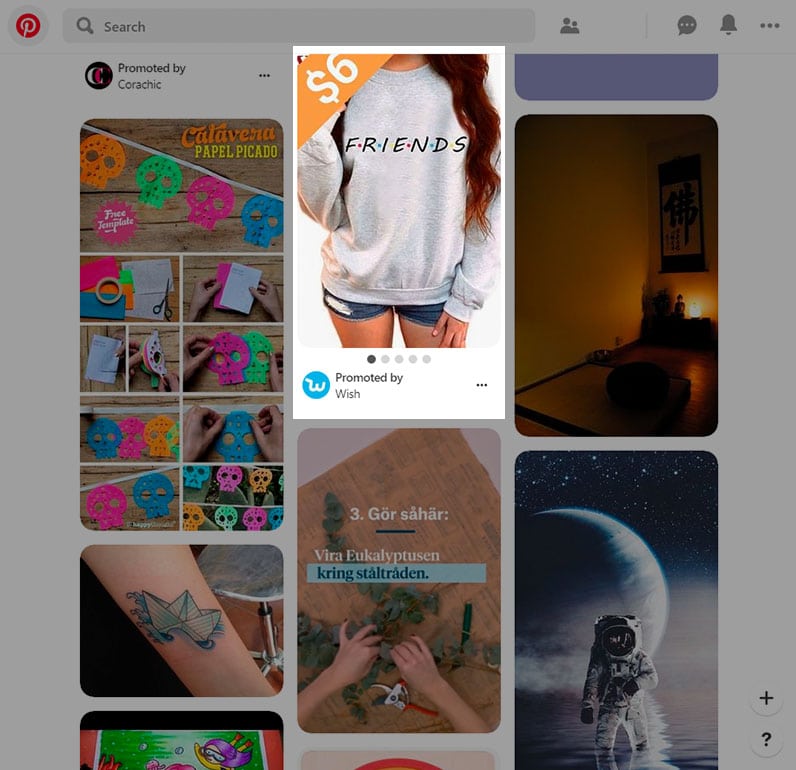
Native ads are those paid ads that are used as if they were organic content. Thus, if a user finds them while on social media, they would appear within the rest of this platform’s content. This kind of advertising, apart from being extremely efficient, isn’t disturbing.
Native ads usually get more views. Thus, they increase purchasing intent. Although they aim at looking as native content of the platform where they’re displayed, most users notice they are ads.
However, they still get better results than other ad formats because they do not annoy users. Their views are 53% more than display banner ads, for instance. So, you cannot ignore them. You’ll find this kind of ad on platforms like Instagram, Facebook, Pinterest, and more.
Video ads
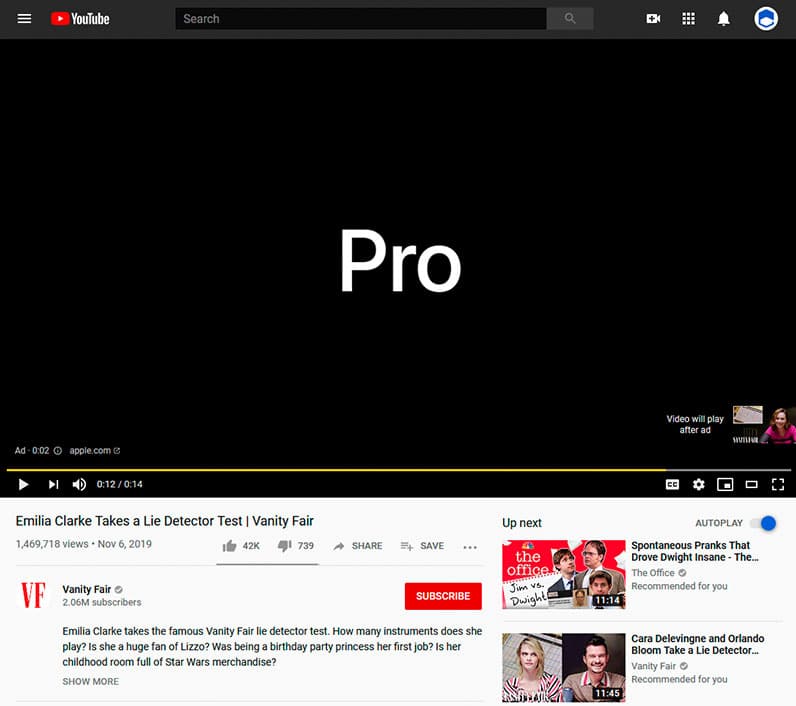
Video ads are an ongoing tendency. No matter where you are browsing the internet, you’ll probably find videos. Video ads are popular as they increase audience engagement. People love consuming videos as the only thing they have to do is watch.
There are various types of video ads: Web page videos, in-stream videos, out-stream videos, interactive videos, and more. The most popular platforms where marketers promote their ads are YouTube, Facebook, Instagram, etc.
Yet, the difficulty of video ads is that they need to fit several screen sizes. Many people watch videos on their mobile devices. But, there are still those that watch them on a laptop or tablet. Thus, it’s mandatory you optimize your video ads.
Not to mention the fact that video length is tricky too. This one will depend on the purpose of the video, the audience to which it is addressed, and the channel. In general, video ads need to be short, at least those you want mobile users to watch.
GIF ads
by Ian Martin Adams
GIF ads are animated image and text ads. If there is only one slide is static. But, GIF ads contain several images that tell a story. Thus, GIF ads work like in a cycle repeating images. Each cycle is called a loop.
There are several possibilities. GIF ads can loop just once, non-stop, or somewhere in the middle. Among its benefits, it’s worth mentioning the fact that GIF ads are not difficult to design, work well on mobile phones, you can use them on most networks, etc.
Interstitial ads
by Google Developers
Interstitial ads are those which appear in the middle of an action. For instance, when you are reading an article and reach the middle of it. They can also appear when playing a game, in the middle of levels, and more.
Once they appear, users can either click on them or close them and continue with what they were doing before the ad appeared. Their main difference as regards banner ads is that interstitial ads cover the whole screen. Thus, they’re more visible.
If used properly, they have higher click-through rates than banner ads. Because of that, marketers tend to use them quite a lot to reach mobile users. In fact, the size of the ad is a greater opportunity to convince your audience.
How to increase the effectiveness of your display network ads
Since display network advertising comprises many aspects, it’s worth commenting on some tips that will help you succeed. On top of that, growing your remarketing list is mandatory. Let’s see how you can increase ad effectiveness!
1. Don’t be afraid to experiment with social media platforms
Whatever the platform/s you use to promote your ads, it’s worth using it to your benefit. That’s to say, before spending loads of money on an advertising campaign, you can always test how it works on social media networks.
Indeed, you can even try several types of ads for the same campaign. And then, take the one that works best for your advertising campaign in other channels. This will help you to test your audience’s reaction before you make a huge investment.
As social networks allow you to target people by gender, age, location, and more, they are perfect for running different ads. What’s more, people expect to see ads there so that they won’t have problems interacting with you.
2. Make the most out of your video content

Video ads are quite a lot popular these days. Believe it or not, people love interacting with video ads since they’re straightforward to consume. As a marketer, you should keep on using video ads to boost your brand awareness.
Video ads won’t only help you increase your brand awareness, but they also give you the chance to demonstrate how to use your products. You can also use them to solve doubts or allow your audience to show others how great your products are.
Thus, under any circumstances should you overestimate the power of video ads. On top of that, videos can be displayed and even shared on many platforms. Go for video ads and let your message go viral!
3. Consider several devices in your ad design
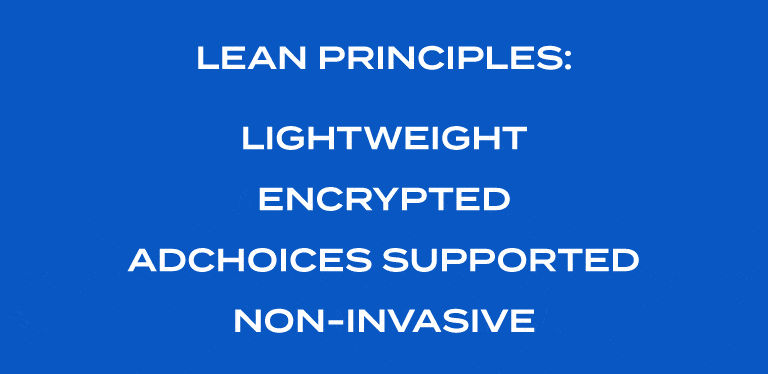
Device screen sizes differ to a great extent. And, this is something you need to bear in mind when designing your ads. There would be ad designs that could look awesome on a desktop computer but terrible on a mobile phone.
So, when creating your ad campaigns, you should consider all device screen sizes. It would be fantastic if you could also focus on the LEAN Principles (Lightweight, Encrypted, AdChoices supported, and Non-invasive).
But, flexibility is not all you need to pay attention to. You should also make your ads more visual as regards text. This will no doubt increase user engagement. So, take advantage of image, video, and any other graphics to make your ads stand out.
Don’t forget to optimize your ads so that people can easily interact with them no matter where they see them.
4. Mobile optimization is a must
Likewise, as mobile users are non-stop growing, you need to create a mobile-first advertising strategy. This doesn’t mean you have to forget about other devices. But, what it does mean is mobile users matter.
It would be terrible to ignore them as your advertising campaigns won’t have great success. So, you need to develop a mobile-first strategy that will help you reach your audience where they are.
5. Implement a data-driven approach

Thanks to a data-driven approach, you would be able to target the right ad to the right audience at the right time. Thus, ad effectiveness will no doubt increase. But, how can you know who to target, when, and where?
You’ll need to collect data from audience research. You can either use the information the platform you’re running your ads gives you or any other research platform. What matters is that because of this investigation, you’ll be able to reach your audience better.
6. Address audience segmentation
Not surprisingly, audience segmentation is key for display network advertising. What better way will you find to please your audience than offering them a more specialized treatment?
Indeed, that’s what most audience groups expect nowadays. You can no longer create general ads that suit everyone’s likes and preferences. You’ll increase your campaign’s efficiency if you target several audience groups according to their preferences.
This audience segmentation targeting will help you to increase your reach and engagement. On top of that, you can also target similar audiences. I mean, you can target audiences with similar preferences as your audience. In theory, they should also be interested in what you have to offer.
7. Enhance your landing page

There are one thousand reasons why you should care about your landing page. By improving your landing page, you will provide a better user experience. Besides, your landing page, your ads, and the keywords you use affect the quality score.
As you may well already know, quality score matters because if you manage to get a great result, it can reduce costs and make your search engine rankings better.
Remember that in digital display advertising, the most common is PPC. But, if when you manage to drive visitors to your site, you fail to catch their attention, it would be all for nothing.
Don’t panic if you don’t convince them the first time visitors go to your site. You can always benefit from running a remarketing campaign. In fact, it is only through your landing page that you can create audience lists.
8. Plan according to your budget
This is not only a tip, it’s common sense. Still, many marketers fail to do it properly. The best advice I can give you here is to target several audience groups and on several platforms according to your budget.
Once you analyze which of these platforms and audience groups gives you more ROI, spend more budget on them. It’s worth saving some money for testing. Preferences are ongoing changing. You can not predict what will happen in the future.
Yet, you can spend more on what seems to work and less on what gives you fewer benefits. This way, you’ll make sure your budget is spent wisely.
9. Broaden your strategy – grow your remarketing list
by Google Ads
You shouldn’t put all your eggs in one basket. If something went wrong, it would be the end of your campaign. But, if you diversify your efforts, you will see lots of benefits. It will take more time and effort. No one doubts that.
Still, targeting several audience segments on several channels would do wonders for your advertising. You can always spend more on what works and play a little safe. Yet, you would never discover new opportunities if you don’t think outside the box, at least from time to time.
On top of that, the more channels you use, the easier it would be to increase your remarketing list. You can then classify people according to their location, gender, channel you want to address them in, and so on and so forth.
10. Use site links and ad extensions
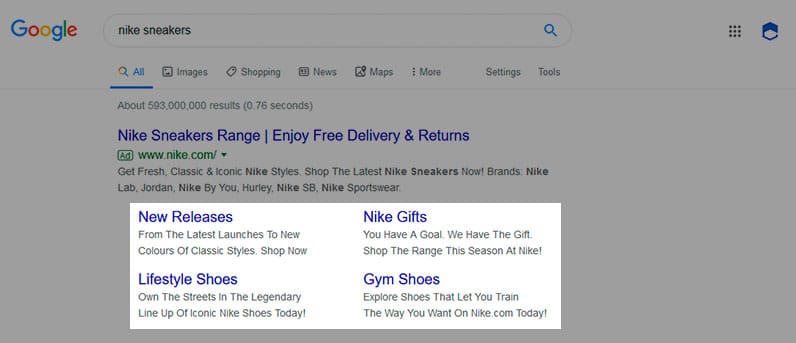
You shouldn’t underestimate the power of site links and ad extensions. First of all, they need to be placed where needed to improve user experience. But, you can also use them to collect data and increase your remarketing list.
11. Come up with simple and visual ads
Simplicity is key as regards display network ads. And, if they are highly visual, chances of success are guaranteed. Visual ads have higher click-through rates than text-only ads. This is because an image is worth a thousand words.
Almost any industry can take advantage of visual ads. You can also combine image and text ads. But, remember messages need to be simple and convincing, or else you will lose leads. Besides, the simplest the ad, the easiest it would be it calls others’ attention without bothering them.
12. Choose relevant keywords
Selecting the right keywords is critical. If you fail to pick relevant keywords, you would be sending the wrong people to your site. Keywords do matter as they are the ones that tell users’ interests.
Imagine you didn’t use the right keywords, what would happen is that you would be sending visitors thanks to ads to your website. However, as soon as they reached your site, they would abandon it as you wouldn’t be offering what they were looking for.
But, if you come up with relevant keywords, your visitors will get what they expected. So, when they reach your site, they won’t leave that easily. Indeed, as you PPC, you want to attract interested audiences. Otherwise, you would be wasting your money.
That’s all for display network advertising. Now you know its benefits, types and how to increase its efficiency.
In the next chapter, I’ll focus on search engine advertising. Keep on reading to learn what it is or update your knowledge and make sure you’re using the latest strategies.
Chapter 5
Search Engine Advertising
Little did we know how relevant search engine advertising would be. Who would imagine that search engines would be used for advertising instead of only providing organic information?
The truth is search engine advertising is currently gaining a lot of relevance. Users interact with paid search ads as if they wouldn’t mind someone is paying for those ads to be placed where they are.
Search engine advertising can be remarkably beneficial as it will help you to get leads and conversions quickly. In this chapter, I’ll explain what search engine advertising is. Then, I’ll talk about its types.
Besides, I’ll tell you all about its benefits and why you should use it. After that, I’ll focus on the different targeting options available and Google’s ads extension. And, I’ll finish talking about some search advertising tactics you can’t miss if you want to succeed.
What is search engine advertising?
Thanks to search engine advertising, you can display ads on search platforms like Google, Bing, Yahoo, Baidu, Yandex, and more. Regardless of the search platform, what marketers do is to bid on relevant keywords for their audience without this being seen.
Search engine advertising can also be called search advertising, internet search advertising, or online search advertising. Moreover, search engine ads usually appear above, on the right, or just below organic search results.
by Digital Garage
Businesses that use search advertising only pay if someone clicks on their ads. Search advertising is pretty effective as it is based on user intent. Companies bid for relevant keywords. In theory, these keywords are the ones their audience is looking for.
So, chances are the ones who click on your ad are interested either in your brand, products, services, or content. Most users appreciate search ads as they offer them exactly what they want. It can be beneficial for any company, no matter its size.
Types of search engine advertising
PPC (Text ads)

These are the most typical search engine ads. They appear on SERPs like Google, Yahoo, and Bing. They can either appear on the top, on the right, or below organic search results. This would depend on the keywords you use and the cost of the ad.
They must identify themselves as ads. Whether they appear or not depends on the keywords you use and a bidding system behind the scenes. The higher the ad appears, the more you’ll have to pay.
Apart from the right use of keywords, you can also target your audience by the time of day, location, etc. As you only pay if someone clicks on your ad, search engine ads are easily measurable.
Google shopping ads
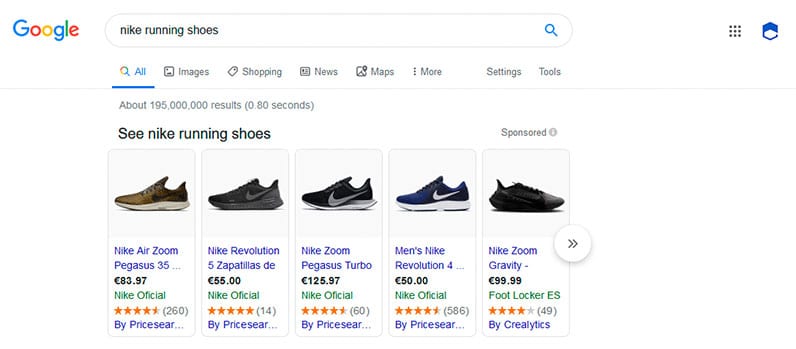
Likewise, Google shopping ads also use keywords. This means they can also be measured and that they target specific audiences. They provide online users with a photo, title of the product, price, and website.
Not surprisingly, these ads can also be targeted by demographic, location, and time. However, something which differentiates shopping ads from text ads is that in shopping ads, everything eligible can be used to be found.
Remember that high-quality product images are key. They will help you stand out from your competitors. Besides, having a responsive website is mandatory. Many shopping ads are viewed through a mobile device. So, you need to optimize your ads for all screen sizes.
Dynamic search ads
by Google Ads
Different from the two previous search ads, dynamic search ads do not work through keywords. Instead, you allow Google to introduce your ad when appropriate. The downside is that you cannot write your own ad text; Google does it for you.
The good news is that you don’t need to make any campaign regular modifications as Google runs everything. This kind of ad is mainly used by brands that have large product inventories.
You won’t need to waste your time and you’ll gain a lot of traffic to your landing pages.
Image and video ads
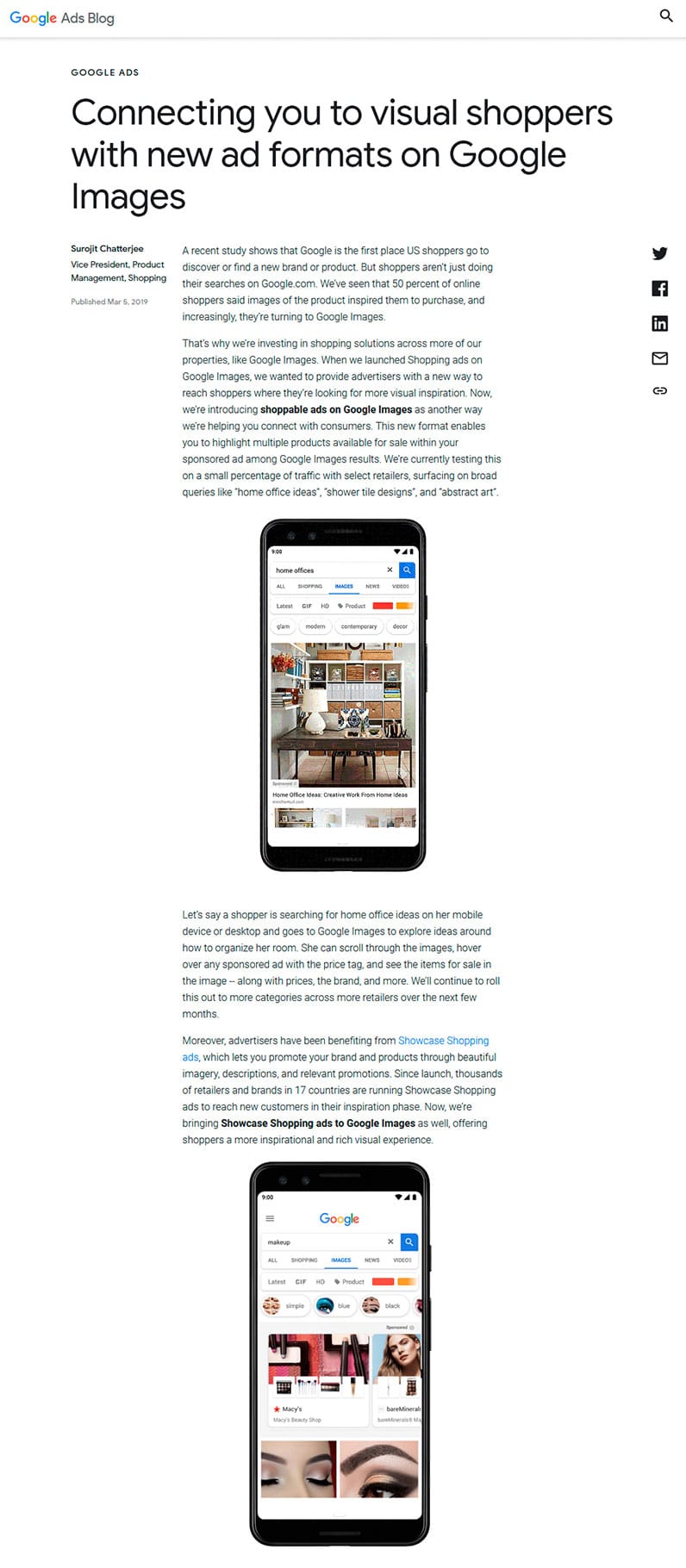
Either in Google’s images and video galleries or on YouTube, you can now target online audiences through image and video ads. The former can either appear in Google’s images within the rest of the images or on YouTube. You are allowed to include a caption and a link to your site.
The latter appears in Google’s video searches or in YouTube too. For instance, when you want to watch a YouTube video, it’s common you have to watch a promotional ad first. Sometimes you can skip it after a few seconds.
Both image and video ads are extremely effective among consumers. Since they offer visual content, they have more chances to generate leads. Marketers know that. That’s why image and video ads are so popular.
Call-only ads

Call-only ads are a type of search ad that has the purpose of encouraging people to call your brand. Thus, they only appear on devices that can make a phone call. But, before you will need to win an ad auction.
That’s to say, you get your ad selected in a search network bidding. Someone clicks on your ad. This person will have a direct call without having to type your phone number; the ad will do it automatically.
You only get charged when someone clicks on your ad. Call-only ads’ purpose is just that to make a phone call. You’ll be asked to provide other data, such as your website URL. But, this won’t be shown in the ad.
If you want an ad that shows several ad extensions, you will have to choose a text ad instead. And then, include more than one CTA. I’ll talk about ad extensions in more detail later on in this chapter.
What are the benefits of search engine advertising?
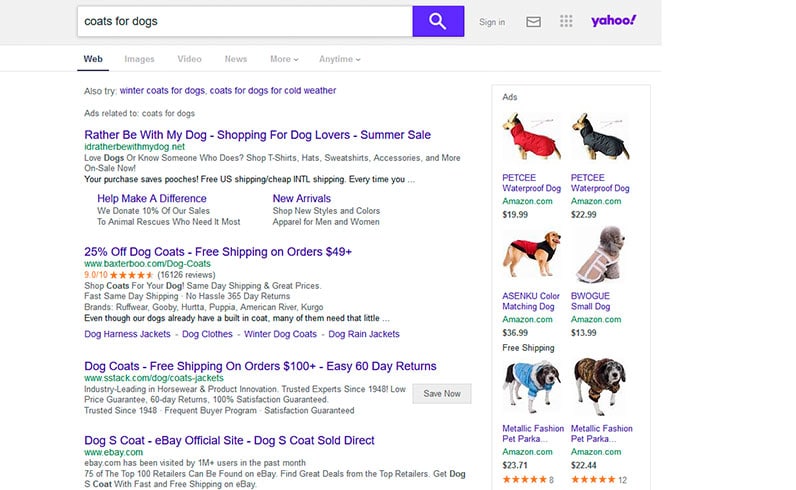
Under no circumstances can you underestimate the benefits of paid search ads. Interestingly, paid search advertising is more powerful as regards mobile users. But, it can also bring many advantages to desktop users.
Given its exposure on well-known search engines, it will help you to increase your brand awareness quickly. That’s because your website will be more visible than with organic search, even if your target audience doesn’t click on the ad.
Another perk is that thanks to search engine platform analytics and your keyword choice, you’ll be able to target the right people with the perfect ad. Thus, you’ll get more traffic as your audience will be somehow interested beforehand.
On top of that, it’s worth mentioning search advertising is critical for mobile users. There are more and more people using their mobile devices to look for information. There is a sense of urgency in their searches. So, they would be more inclined to complete the desired action.
Benefits
- Boost brand awareness.
- Target the right audience with the right ads.
- More traffic.
- Higher visibility.
- Interested audience.
- Mobile advertising.
- Powerful analytic.
Note:
Quality score is what defines Google’s rating system. In other words, it’s the score Google gives to your ads considering how well they answer people’s searches. The goal is to prevent low-quality ads from ranking high on search engine results. Thus, improving UX.
Targeting options in search network ads
Search network advertising started targeting keywords. They’re still the most important targeting option in search network ads. Still, there are other factors that affect bidding auctions and search network ads’ success.
Let’s have a look at them!
Keywords
Keyword targeting consists of figuring out which keywords your audience would use if they were interested in your products/services. The drawback is that only with keywords there can be misleading search results.
What’s more, if you want to select relevant keywords, you’ll need to understand your audience. Not only their preferences matter but the devices they use, where, when, and a lot more.
Audience
Search network ads can target audience groups like social networks do. However, search engines don’t have as much information as social media networks. Still, audience targeting can help you better reach your ideal audience.
You can even target people according to the data you get from your website. Although audience targeting has improved paid search ads’ success, you can not rely on this targeting option alone. Guessing relevant keywords is still king as regards paid search targeting.
Demographic (age, gender, location and device type)

Demographic targeting forms part of audience targeting. But, due to its importance, I decided to devote some lines to it alone. Thanks to this targeting option, you can consider user intent and adapt your bidding to it.
That’s to say, if you just target through keywords, it could be the case that two people used the same keywords to look for different things. Say, an elderly woman from the US won’t be looking for the same “party dress” as a young woman from Japan.
So, because of demographic targeting, you’ll be able to show ads to specific audiences. You can target others by location, age, gender, and device type. Any of these options would make a great difference to your search advertising success.
Language
The language in which you create your ads matters. You can create ads in different languages to better match your audience groups. But, you can also ask search engines only to show your ads to specific language searches.
This way, you’ll make sure the person who sees your ad will understand it. It is worthless to show your ads in countries where most people can’t figure out what your ad is trying to convey.
Affinity audiences and in-market

These targeting options are also connected with your audience. They will undoubtedly help you spread your search advertising campaigns as they’re based on people’s actual searches.
Generally speaking, affinity audience targeting is used to increase your brand awareness. You will target audience groups with similar likes and preferences. For example, media & entertainment or food & dining.
Whereas in-market targeting is used to help you get to those who are ready to make a purchase. For instance, there are in-market seasonal segments like Christmas or Black Friday.
Daily and weekly hours
You can use your search ads to target others on specific days and at particular times of the day. This will affect your bidding so that your ads will only appear when your audience is more active. Thus, increasing your chances to reach them. And convince them to take the desired action.
Call-only campaigns
This targeting option consists of targeting people who use devices where they can make a phone call. The purpose of the search ad is to skip the unnecessary Web page click and direct users straightaway to call your brand.
This option is highly useful for businesses that provide urgent services like household services. Companies that provide immediate services won’t probably have the same clients once and again. But, they need to constantly call the attention of new clients.
Google ad extensions
by Surfside PPC
Google ad extensions can help you improve your ad’s performance. Thus, you should include some. You should at least add around four ad extensions. What ad extensions to include will depend on your goal.
For example, if your search ad goal is to increase your local sales, you should introduce location-based ad extensions. But, if your goal is to promote your app and convince people to download it, you need to include app extensions.
Ad extension types
- Location-based goal
- Location extensions.
- Affiliate location extensions.
- Callout extensions.
- Contact you goal
- Call extensions.
- Message extensions.
- Visit your website goal
- Sitelink extensions.
- Callout extensions.
- Structured snippet extensions.
- Price extensions.
- Download your app goal
- App extensions.
Important note:
It’s up to you what ad extensions to include. But, Google will only show them if they are expected to improve your ad’s performance. On top of that, ad extensions only appear when your ad ranks high on SERPs.
Search engine advertising tactics
1. Keep an eye on voice search

Given that voice search is experimenting an ongoing growth, it’s advisable you take it into account for your keywords choice. Because of voice search, there has been an increase in the popularity of long-tail keywords.
This is due to the fact that voice searches use questions and longer phrases with a more precise vocabulary. I’m not saying all your search engine advertising campaign has to be designed according to voice search.
But, that you should take it into account and watch out how far it reaches. This way, you’ll be better prepared to make quick changes where necessary. Thus, increasing your search engine advertising success.
2. Choose your keywords thoroughly
Similarly to when you choose keywords for SEO, you’ll need to do some keyword research. But, this time, the keywords you have to select are those which best match your search ads. This matters as keywords choice and how well they go with your ads affect your ads bidding and exposure.
Once you have decided on your search engine ads’ keywords, you’ll need to decide on match types. There are several match types: broad match, exact match, and phrase match. The matching choice will depend on your ad.
Indeed, it would be great to A/B test which one works best for you. These keyword matches with users’ searches will help you to call the attention of a more targeted audience. Thus, generate more traffic to your website.
Important note:
As important as keyword research and the right choice of keywords, you need to draw some attention to competitor analysis. By spying on what your competitors are or are not doing, you will be able to get ideas. I don’t mean copying ideas.
What I’m trying to say is that you can implement a strategy that seems to be working but you weren’t using. It would be even better if you could discover their weak points and take advantage of them. For instance, by offering something they’re not.
3. Decide on your negative keywords
You must make use of negative keywords. Negative keywords are those keywords you want search engines to take into account not to show your ad.
Even when you’re bidding to get your ad shown, it’s vital search engines show it to the right people. If you manage to get your search ad selected to be displayed and it doesn’t match people’s searches, you’ll be wasting your money.
4. Improve your audience targeting
Keywords alone are no longer enough as a targeting method. If you want to make the most out of your search engine advertising, you’ll need to also focus on audience targeting options too. This way, you’ll not only provide a better UX, but you’ll also get more leads and conversions.
As you may well have noticed, search engine advertising audience targeting is not as easy and exact as in social networks. Still, developing your buyer personas and targeting others according to demographics, for instance, will help you get better results.
5. Run more than one ad, A/B test

It would be a mistake to put all your efforts into just one ad. What if this ad doesn’t get you neither leads nor conversions? Just because people click on your ad, it doesn’t mean it is performing well enough.
In fact, it is advisable to run more than one ad, even during the same campaign. This would give you something to compare with. Once you learn which ad is performing better, you can spend more budget on it.
What’s more, you can use different ads to target diverse audience groups. This way, you’ll also make sure you’re increasing your brand awareness. And, as you only pay if someone clicks on your ad, it might be worth maintaining several search advertising ads for a while.
6. Take advantage of seasonal advertising

If your business sells more during specific periods of the year like Christmas, you should definitely focus on increasing your search ads during this season. It would be wise to use specific keywords and audience targeting to increase the visibility of your ads.
And, do not forget to include a sense of urgency. Most of the time, it boosts sales. But, your main goal should be to drive the right people to your website through carefully designed search ads. If you can afford it, it’s worth running more than one ad at the same time.
7. Optimize your ad copy (content)
Apart from your keyword choice, once your search ad is shown on a SERP, what matters the most is the ad content. These days people are fed up with misleading ads. So, don’t promise what you can not offer.
Indeed, it is advisable to write a simple and concise message. You could also create some ad variations. And later, you’d be able to check which one performs better. But, simplicity is not everything that you need to consider.
Don’t forget to include your ad keywords in the ad title, URL, and description. Thus, you will guarantee your ad’s optimization. Odds are you’ll increase your ad’s performance.
8. Include ad extensions
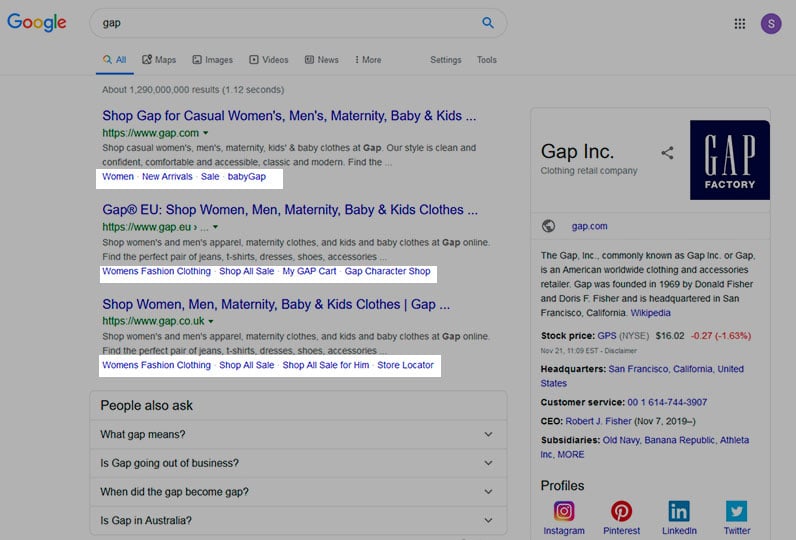
If the search engine you use is Google, you can’t miss out on ad extensions. You can include the ad extensions that better match your ads according to your goals. However, it’s up to Google whether to show them or not depending on your ad’s performance.
Ad extensions can only be seen if your search ad ranks high or on the first page of SERPs. The purpose of ad extensions can vary with the campaign. For instance, it could be the case that you have just released your latest app. Thus, you should include app extensions.
9. Improve quality score
Your quality score is the best indicator of how your content or ads are performing. As regards search engine ads, your quality score matters because it affects your CPC and your bidding.
Fostering a better quality score won’t only help your paid search ads bidding and your CPC. Indeed, a better quality score would mean you’re offering a good UX. Thus, it increases not only your site’s traffic but also your conversions.
To enhance your quality score, you’ll need to focus on several aspects. Among others: your CTR, your landing page, the relevance of your keywords for your ad, etc.
No one knows to what extent any of these factors matter more or if they are all equally important. So, you will need to focus at least on the aspects I’ve just mentioned before. By improving them, you’ll be a step closer to boost your quality score.
10. Localize your search engine ads
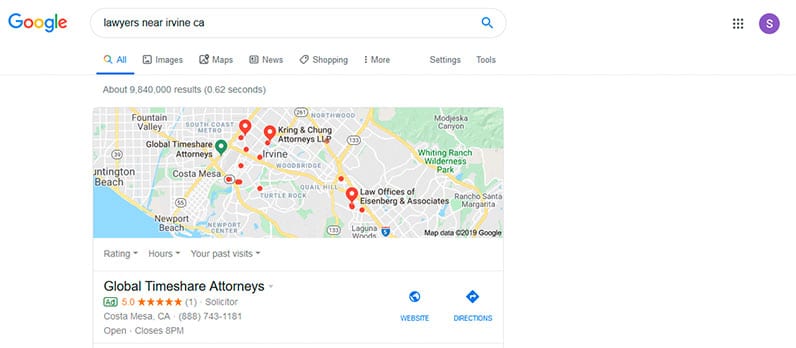
Location does matter for search engine ads. Think of mobile users, for instance. They use their mobile devices to search for brands and products near where they live. But, they are not the only ones who can benefit from location targeting.
Geo-targeted ads perform way better than non-targeted search engine ads. If you’re running local campaigns, you should design local search ads. This way, you will not only use the right keywords for your content, but you will also improve UX. And, this matters because location-based campaigns also improve CTR and conversion rates.
11. Analyze your search ads success
You must check and analyze your search engine ads’ success. Indeed, you should not only do that as regards the ads you’re currently running, but you should also compare the results with past campaigns.
This information will help you to improve your ad performance. It’s never too late to learn from mistakes. So, you should at least know how much traffic your paid search ads are generating. And then, if those who click on your ads actually convert.
And that’s all for search engine advertising. Now, you know what it is and its types. Not to mention its benefits. Please don’t wait to apply my proven tactics and succeed!
In the next chapter, I’ll explain all you need to know about social media advertising. Sounds interesting? Keep on reading to discover the latest trends!
Chapter 7
How to Optimize Your Digital Ads
It’s high time I show you how to optimize your digital ads. Knowing what ads to use and where to promote them is not enough. You’ll also need to understand how and when to display them.
In this chapter, I’ll show you how to optimize your social media ads. Thus, I’ll talk about advertising frequency and how to manage it.
Only afterward will I focus on the content marketing strategy for your ads and how you can perfect it.
Finally, I’ll stress the importance of your landing page. And then, I’ll share some of my best tips so that you can succeed.
Advertising frequency
Given that too much ad frequency can be spammy, you must devote some time to decide on the frequency of your ads. Most marketers use digital advertising to increase their brand awareness, among many other goals.
So, the logical reasoning would be the more you promote your ads, the better. Well, some disagree with this statement. Indeed, ad frequency matters as regards its effectiveness.
If you do not promote your ads enough times during a campaign, you run the risk of not causing a lasting impression on your audience. So, you won’t persuade them to take the desired action. But, if, on the contrary, you display your ads too often, some users will end up tired of seeing them.
There is no magic number as regards ad frequency. Most researchers agree on the fact that this number varies depending on the medium, campaign goal, type of ad, target audience, and more.
On top of that, you have to consider that most advertisers also promote their ads on traditional channels, not only digital ones. So, the frequency of exposure is higher. Thus, you need an A/B test and try to find the best frequency for your brand regarding each digital platform.
How to manage social media advertising frequency
1. Find the optimal frequency for your brand

Finding an optimal ad frequency is not at all a piece of cake. If you expose your audience to an excessive ad frequency, you’ll cause them ad fatigue. To avoid it, there is something called frequency capping, which I’ll explain later.
Not surprisingly, ideal frequency won’t be the same for all marketers, neither will it be the same for all platforms. As a marketer, you’ll probably have heard about the “rule of the seven.”
Most experts believe you don’t necessarily have to advertise your products seven times to convert users into customers. Depending on a great number of factors, both a smaller and a larger number could be better.
No fixed frequency number works for all brands. Still, to calculate yours, you should consider the following factors: brand awareness (well-known brands need less exposure), audience demographics, campaign goals, product cost (expensive products need more exposure), etc.
So, A/B testing is key. Your frequency management will differ according to the medium, type of ad, the goal of your advertising campaign, and so on and so forth. Still, there are some general rules you will no doubt find interesting.
As regards banner ads, it would depend on whether you’re running an average campaign or remarketing. In theory, the more your ads appear, the better it is for your brand awareness. Still, it’s worth considering ad blindness.
2. Befriend frequency capping

Frequency capping refers to controlling the frequency of your ads on digital platforms. That’s to say, it aims at regulating the number of times an average user is shown your ad. Targeting the same person too much can have a negative effect.
So, instead of convincing someone to take the desired action, you can bother this person. There are better ways to spend your budget. Instead of over-targeting someone and provoking ad fatigue, you can reduce your ad frequency.
Indeed, there are some platforms that will help you with this task. In Google Ads, you can only set caps for video and display campaigns. You can either do it manually or allow Google to do it for you. It is not possible to apply caps for search ads, though.
Facebook is a completely different story; it combines manual and automated capping. In the section “reach and frequency,” you’ll be able to manage your ad’s exposure. You can go from less than twice a week to more than twice a day (option manually selected).
Thus, it’s up to you how much ad frequency you want to practice during an ad campaign. Not all campaigns will need the same frequency. Neither will all your products. Remember that ad frequency varies according to several factors like the medium, product, and more.
The best way to succeed and not to waste your money is to A/B test. You can start with a small number and increase it as necessary. And, do not forget to measure your ad campaign’s success taking frequency as a relevant metric.
Content marketing strategies for your ads

Unsurprisingly, you need to develop a content marketing strategy for your ad copy. Otherwise, your ads won’t have the desired effect you expect. Even if you address your top-selling items on your ads, if your ad copy doesn’t include what people want, you won’t succeed.
The same is true for your call-to-action. Just because you feature your more well-known products on your ads, if you do not include a compelling CTA, you won’t persuade others to click.
Not to mention that your ads, apart from being trendy and up-to-date, need to be attractive. So, your ad copy wording is of vital importance. Besides, it would be wise to use different keywords from those of your competitors, not to be confused with them.
Some A/B testing and audience research are fundamental too. Nowadays, we no longer design ads that match general audiences. Digital advertising more frequently addresses specific target audience groups.
Now, that’s clear content marketing is of great importance for your digital ads. Let’s have a look at some tips.
How to perfect your ads with content marketing
1. Answer the Wh-questions in your ad copy
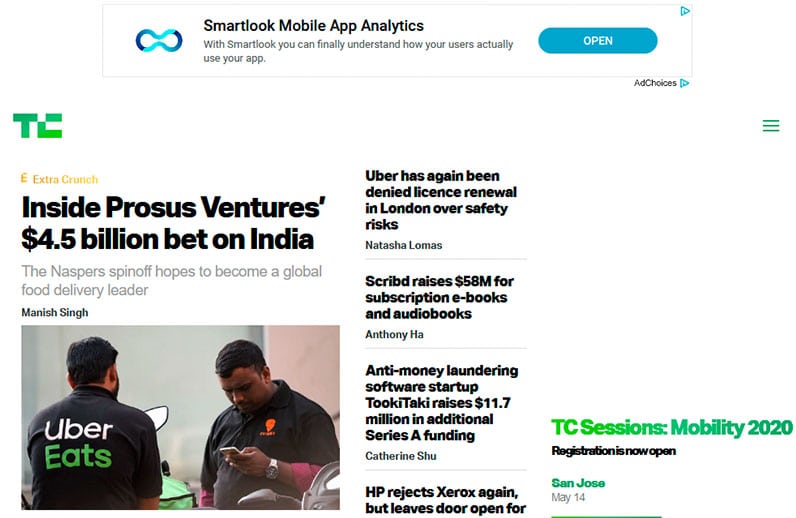
Although not all ads, neither all mediums are great for that, where possible, answer the Wh-questions in your ad copy. This is relevant because providing the right information will help you to generate more engagement.
For example, on social media networks, users interact more with brands that say what, when, where, why, and how their products will solve others pains. This is as important as a compelling CTA.
At least who, what, how, and why can be easily introduced in most ads. The truth is if you fail to include vital information, your ads will be less interesting. On top of that, if you happen to run a seasonal campaign with special offers, you could also include when and where.
2. Use the language your target audience uses
Your ad’s copy language has to match your audience. Not surprisingly, you should avoid using formal language if your target audience doesn’t use this kind of vocabulary. Though, you should use expert words if you target experts such as doctors, for instance.
What I’m trying to point out here is that the language you use has to be appropriate for your audience, or else they won’t feel identified. Be careful with how you spell words in your ads, use a friendly tone of voice, convincing message, etc.
The idea is that your brand will be judged by what you say in your ads. Your ad copy is a representation of your products but also your brand. Thus, it’s advisable, if not mandatory, you use personalized messages that match your brand’s audience.
3. Include an effective CTA
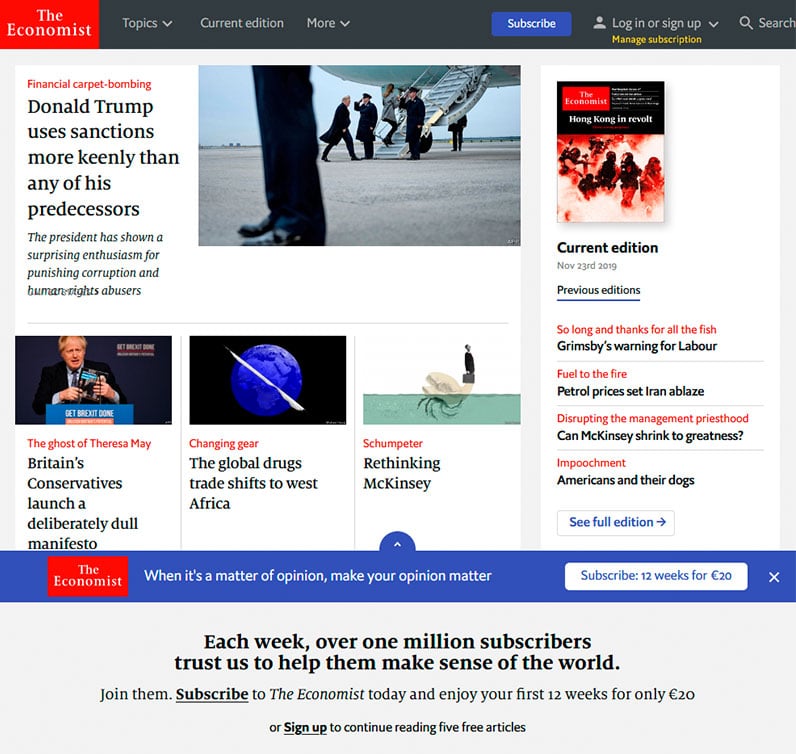
The message of your CTA matters. It’s crucial you add a CTA. But, what should you say in it? Well, that depends quite a lot on your brand, your products, and your campaign goals. But, generally speaking, you should write a simple and direct message.
Besides, it would be wise to include sensitive words as emotions are king these days. Not to mention that if you want your CTAs to increase your engagement, they need to communicate a certain sense of urgency.
On top of that, colors matter as much as words. Thus, A/B testing with your CTAs is a must. You can try different messages and colors till you find the one that provokes the desired effect.
4. A/B test & find the best ad length
Whether it’s better to use a short or a long copy is open to debate. Some marketers believe it’s better to go to the point and be succinct. Others argue that longer copy converts better on some digital mediums.
But, what option is the best for your brand? What you should do to find your most prolific ad length is A/B test. In other words, some audience groups fancy short ad copy. Others are fond of a longer one.
It’s up to you whether to use one or the other. It will also depend on your industry and the products you want to sell. But, to find out what works best, you’ll need to try several lengths and monitor. The one that gives you more conversions, that’s your ideal ad length.
5. Answer your audience pains

The best way to perfect your content marketing strategy is to know your audience and their pains. During the planning phase of any ad, it’s critical to do some audience research. You need to become familiar with their demographics, but also with their pains.
You’ll probably have already done this for your product design, development, and manufacturing. But, your audience matters for your ads too. They are those your ad has been designed for. You need to know your buyer personas.
Failing to do so could be at the cost of your advertising campaign success. Think of what kind of language they would use to describe your product. Consider not only why they need it but how your product is going to help them.
6. Add visuals where possible
by Jerry Banfield
Images are remarkably powerful. You know what they say “An image is worth a thousand words.” Images also convey a great part of your message. If cleverly combined with your CTA, they can have a lasting impression on your audience.
Not all mediums and ad types allow you to introduce an image. Yet, most of them do. So, where possible, it is advisable to make use of visuals. What’s more, there are occasions when you can even use user-generated content like on social networks.
Likewise, videos are critical too. They are even more popular than images. Nowadays, people love watching videos. That’s because they provide lots of data. And also, because your audience doesn’t have to do anything, just watch.
7. Spy your competitors
There are loads of reasons why you should spy on your competitors. Among many others because you need to know what’s what they are doing so that you can do something different. Being creative is fundamental for digital advertising success.
Moreover, you can also pay attention to their keywords. If they are your direct competitors, you won’t want them to rank for keywords you are not using. This would give them more visibility.
But, if you find out keywords that can help you be found and they’re not using, that’d be awesome. Still, you can also take advantage of other issues due to spying. You can address their audience groups and try to steal their consumers and more.
8. Come up with an exclusive and compelling headline
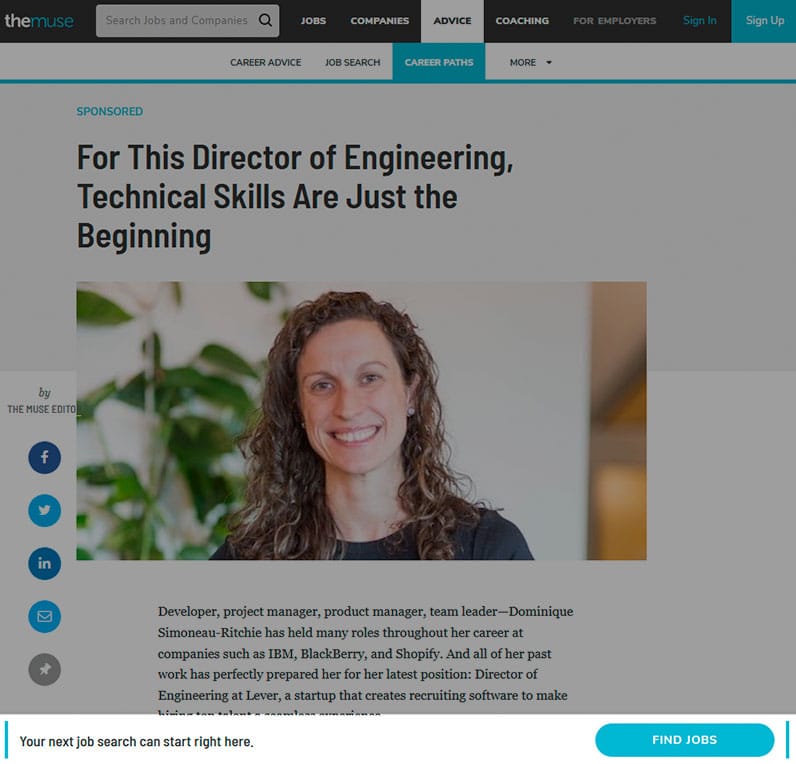
Most ads include a headline, whether they are search ads or social media advertising. Unsurprisingly, the ad headline matters so much. In the case of search ads, it is the headline that will convince online users in the first place.
Thus, you need to include relevant keywords in your ad headline. But, it is also necessary you convince people there too. If you don’t attract users’ attention in the headline, they won’t read the rest of the ad.
You can try talking about your product benefits such as a free trial, 30% off, and more. Such phrases will call users’ attention. So, they would be more inclined to click on your CTA and learn more.
Do not promise things that don’t match the offer. I mean, once they click the ad’s CTA and go to your landing page, the information has to correspond with what you offer. Doing the contrary would cause you a bad reputation.
9. Take advantage of emotions to engage with your audience
Whatever the medium, no matter the ad type, you can take advantage of conveying emotions in your ad copy. What better way is out there to persuade someone than making them feel differently.
Indeed, you can influence others’ feelings with your ads. Yet, to be able to do such a thing, you’ll first need to know them. Once you know their preferences, fears, or the things they love, it would be easier to remind them of that with your ad.
10. Create a sense of urgency
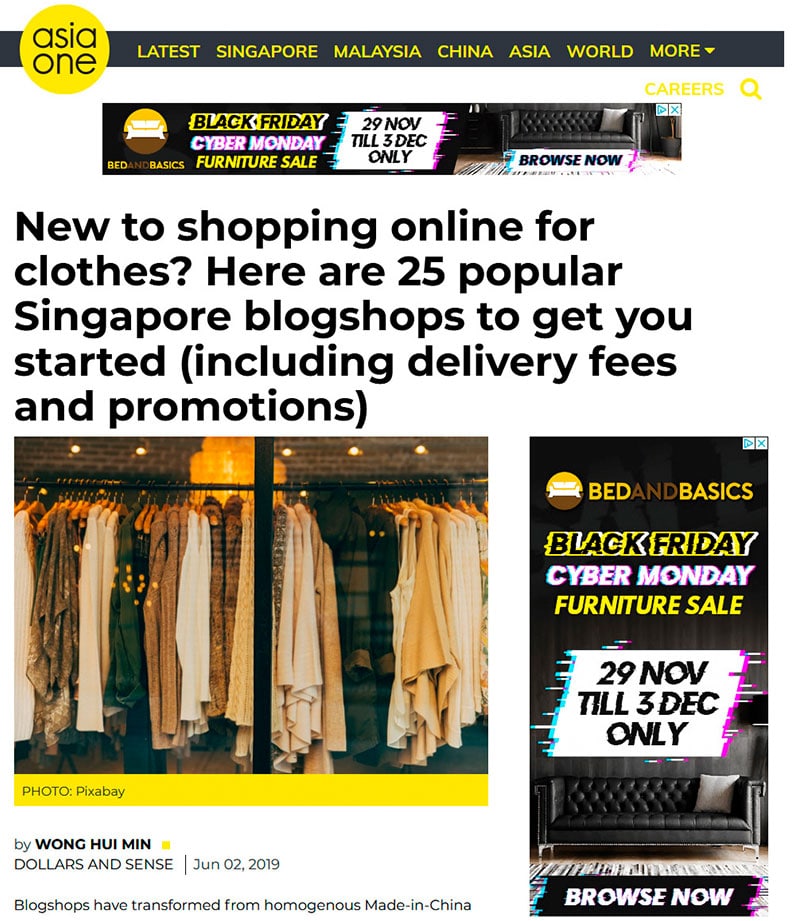
This tactic works for almost any ad type. In general, you can also use it in most mediums. Adding this feeling that your product will only be available for a limited amount of units or it will last for a specific time does the trick.
Most consumers buy on impulse. So, if you encourage them to click on your ad, they would be more predisposed to take the desired action and convert.
Content marketing strategies are indispensable nowadays. Just a great image and a CTA are not enough. There are those who take the time to read an ad’s copy. Yet, if you want people to stop doing whatever they were in and pay attention to your ad, it has to be worthy.
Landing page best practices
Not surprisingly, your landing page needs to match your ad offer/promotion. You must be thinking that’s common sense. Well, not all pages do it. That’s why they lose prospects as soon as they visit their landing page.
Say you’re driving people to your site talking about one of your product’s free trial. But, when people reach your landing page, you’re selling all of your products. Sadly, you would lose the opportunity to sell your product as your landing page doesn’t match your ad.
In fact, it is advisable to make sure you focus on one main goal on the landing page with no distraction. This will guarantee you’re offering what’s being promised in your ad. Thus, you will generate trust.
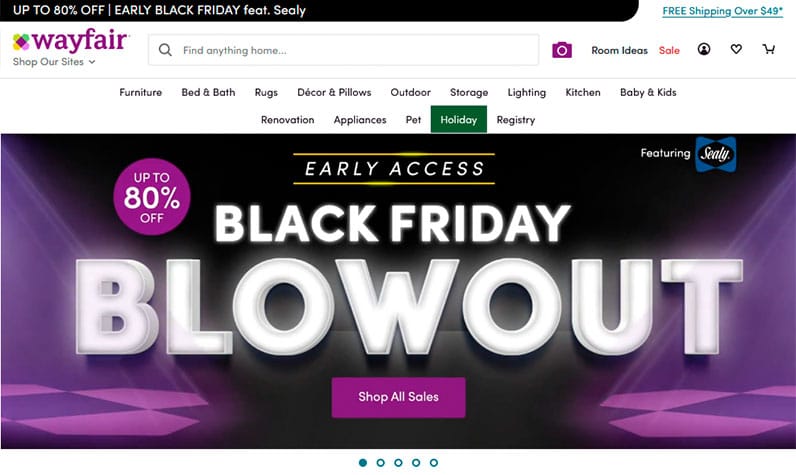
Besides, it would be great to use the same or similar wording in your ad and your landing page. This would make your message more convincing. Be careful not to make mistakes with prices, different promotions, fake information, etc.
On top of that, it’s worth mentioning that the correspondence between your ads and your landing pages affects your quality score. If it’s too low, you won’t have your ads shown on search engines. So, there needs to be some coherence even in your CTAs.
How to increase your landing page experience
1. Offer a relevant and useful message
Given that you want online users and prospects to click on your ads and spend time on your site, it’s key your landing page is relevant.
Your landing page has to match what you’re offering in the ad. Otherwise, users would log off as soon as they see the content you provide is not what they expected it to be.
Apart from being relevant, your landing pages need to be useful. I mean, you have to offer extra content as regards the ad. If you do not provide extra details, why should people go to your site after seeing the ad?
2. Originality drives engagement
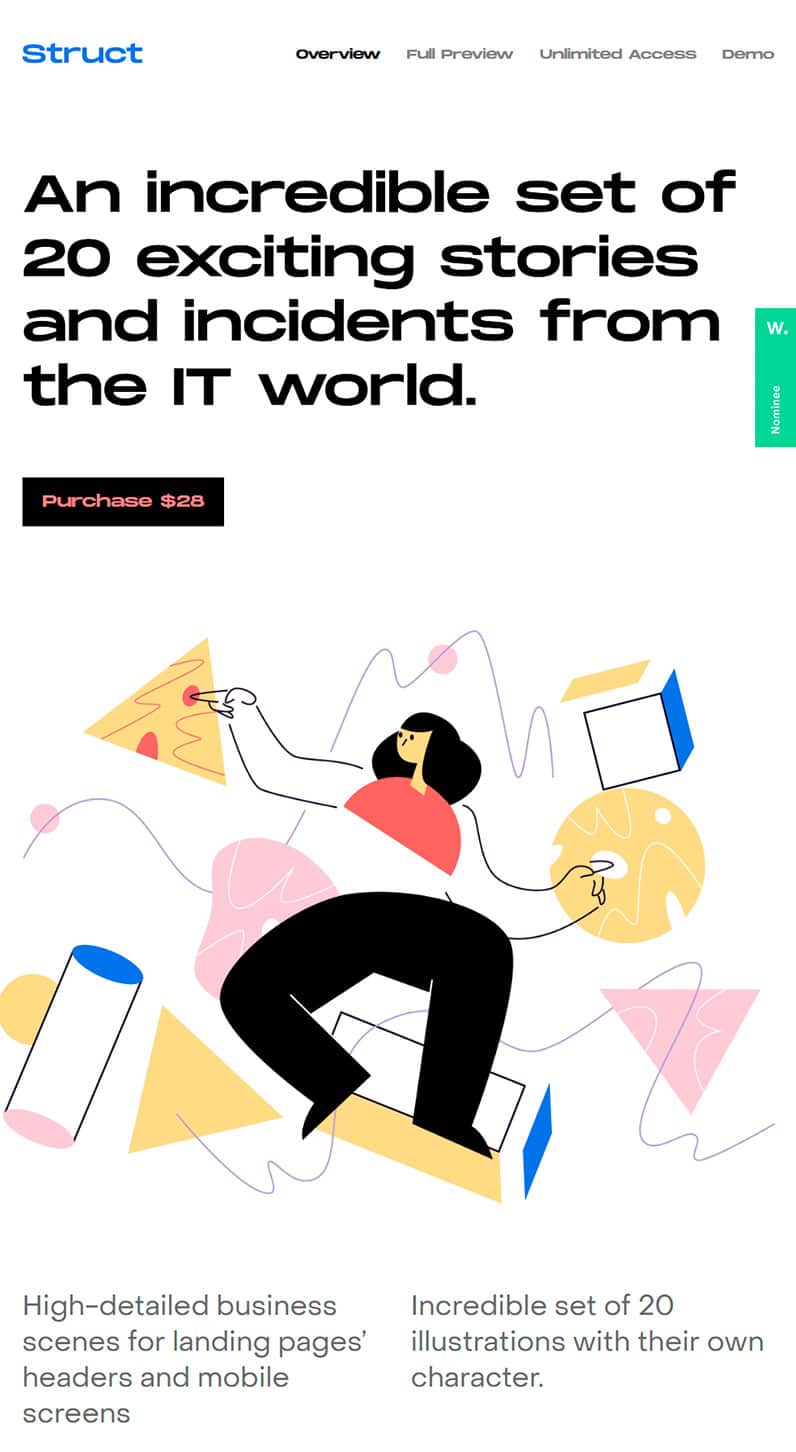
Being creative drives engagement. You won’t impress your audience if you do what others do. If you want to call their attention, you have to make an effort to offer something different.
Nowadays, originality is complicated. Yet, if you give it a thought and think about what makes you unique, you can captivate others.
An example of creativity would be to do something different on each of your landing pages. If you happen to have more than one landing page for your ads, you need to do something different.
It won’t be a great idea to send them all to one landing page. Each ad offers something different. Likewise, each of your landing pages needs to provide unique content.
3. Reduce your landing page loading time
It comes as no surprise that loading time matters. What do you do when you’re browsing and end up on a page that seems to take ages to load? You abandon it. So will do your online users. But, you don’t want this to happen, so you need to reduce your loading time as much as possible.
On top of that, loading time is among the many aspects Google takes into account to calculate your Quality Score. And, this is critical for your site’s ranking. What’s more, loading time needs to be optimized for both desktop and mobile users.
4. Provide a great user experience

Providing a great UX is critical. Unbelievable as it may seem, this is as vital as presenting relevant information. Thus, you need to make your landing pages easy to navigate both for mobile and desktop users.
So, you should put relevant content on the most visible part of your site, for instance, on the top. Not to mention the fact that if you’re trying to sell a product in your ad, it’s necessary you make it easy to order it from your landing page.
Easy to navigate landing pages convert more as users have great experiences. Try not to annoy them with pop-ups. You can use those somewhere else, but not on the landing page that matches your “selling ad.”
5. Boost your landing page trust
There are loads of reasons why you should encourage your landing page trust. Among many others because if users don’t trust you, they won’t buy from you. Indeed, you can easily enhance your brand’s trust by including contact information and social proof.
By contact information, I mean your phone number and address. And if you make your phone clickable even better. And, by social proof, what I mean is reviews, testimonials, etc.
But, be careful! You need to include real ones. You can ask happy past customers to do that for you. There would be more than one willing to share their experiences.
I hope you’ve found this chapter interesting. Now, you know how to optimize your social media ads. Today, it’s critical to know how to manage advertising frequency. But, as important as that is what you write in your ad copy and that it matches your landing page.
In the next chapter, I’ll focus on digital advertising testing and measuring. If you want to learn more and succeed, you can’t miss it out.
Chapter 8
Digital Advertising Testing and Measurement
Getting familiar with digital advertising basic and advanced techniques is pivotal to success. Yet, what works for other brands doesn’t necessarily have to work for yours.
So, once you’ve decided on what digital ads you want to use and where you need to A/B test. Likewise, it’s critical you check and analyze the success of your ads.
In this last chapter, I’ll talk about digital advertising testing and measurement. Thus, I’ll comment on all those aspects you can A/B test. And then, I’ll share some of my best practices.
Once we are done with that, I’ll cover digital advertising measurement. So, I’ll show you how to measure the effectiveness of your digital ads. Ready?
A/B testing for your digital advertising
Given that a single change can make a huge difference in your advertising campaigns, it’s worth A/B testing. However, it would be best if you didn’t make many changes at the same time. What’s best is to change just one feature and then compare.
What is A/B testing?
In other words, A/B testing in digital advertising refers to taking two ads and change just one element. Then, you have to display one of these ads to half of your audience and the other to the rest. The testing time needs to be the same. The last phase is comparing results.
by Jason Wardrop
You should allow at least enough time to let your audience interact with your ad. Once you finish with one test, you can run a different one. The first step is to know why you want to test the efficiency of a feature. Likewise, it’s necessary you think about what you want to achieve.
What most marketers do then is to take one of their strongest ads features to compare with something new. Who knows, you might be wasting your money but didn’t know about it. How often should you run advertising A/B tests? Regularly and in each campaign.
Think that online users’ preferences and technology advancements make digital advertising to be in an ongoing phase of changes. Test different characteristics each time. Before starting any A/B testing, you need to know and analyze how the element you are going to test is working.
What you can A/B test for digital advertising
The following are some examples of what advertising elements you can A/B test in your advertising campaigns. To get better data, remember to test just one at a time. Otherwise, you’ll realize some changes have occurred but wouldn’t know why.
Ad formats

This implies a lot more than changing one element as ad formats imply several aspects. What I mean is, it is completely different if you use a text ad, an image ad, a video ad, a shopping ad, a call-only ad, a GIF ad, and more.
Not surprisingly, if you want to test the performance of two ad formats, you should do it in the same medium. Say you want to compare the power of your text + image ad against your video ad.
So, you should take half of your audience and display one of them while you do the same with the rest of your audience. But, on the same advertising channel such as Facebook, for instance.
Ad headlines
Ad headlines are of utmost importance. But, not all headlines will help you with conversions. Neither will all headlines catch your audience’s attention. So, how do you discover what headlines work best? There’s no other option than A/B testing.
For each of your ads, you should think of at least two headlines and then A/B test. However, you cannot use the same headlines for all your channels either. Thus, what you need to do is think of different headlines for each of your ads. At least two per medium.
Ad copy

Likewise, testing your ad copy can help you understand what works best for your audience. There would be audience groups that would prefer longer ad copy, while others would show more interest in a shorter one.
What you say in your ad can help you convince others and generate more conversions. For example, you can focus your ad copy on the benefit of your product. But, you can also shift the center of attention to its promotion only.
Whether to use one strategy or the other will depend on testing what your audience prefers. Remember, not all audience groups need to like the same. Nor will any ad copy work well in all digital mediums.
Keywords
Not surprisingly, keywords are crucial for digital advertising. Either search ads, display ads, or social media ads need to include relevant keywords. These matter for the bidding process, for instance.
If your ad’s keywords are not relevant, this will affect your ad’s frequency of exposure. Similarly, keywords matter so much when someone is looking for a product on a search engine.
So, you need to A/B test with those you think people will use to describe your product. Only through testing can you find out what words your average consumer is using to describe your products. This can differ among audience groups.
Say some of your target audience is middle-aged and use a standard word to define your product, while your younger consumers prefer an abbreviation.
Ad posting time & day

Discovering your optimal times and days of the week to display your ads is of utmost importance. Those are the times when your audience is more willing to interact with your ads. Thus, you will get more conversions.
How do you know that? Testing. But, once you analyze your data, you can spend more budget at optimal times. And, you can reduce your ad exposure when your audience is not active. This way, you’ll spend your budget more wisely.
Design

Unsurprisingly, it is also possible to test the design of your ads. For instance, you can test your image colors, image size, ad size, text colors, text size, and much more. But, if you want to know what generates more conversions, remember to change just one feature each time.
There would be platforms where a specific design will work better. However, other mediums would fancy another design. This is mainly because different audience groups have different preferences. If you want to succeed, you have to find out what they prefer.
Remember to optimize all your ad designs for mobile users. They are a great part of your audience. So, it is mandatory to take them into account.
CTA
Testing with your CTA can help you get more conversions too. What can you change in your tests? You can use different words, button sizes, text colors, button colors, among other things. Yet, it is not advisable to change more than one element at a time.
I mean, each time you want to test your CTA’s efficiency, you should only change one feature. Say the color of your CTA button. So, you would compare two different CTA button colors. After a while, you’ll know which one works best.
Once you finish with the button color, you can test another aspect like the CTA button size, for instance. CTAs are easy to test. So, don’t be afraid to play with them and find what works best for your audience and ad format.
A landing page feature

Your landing page is a crucial element as regards your advertising campaign. Before, I mentioned your landing pages need to match your ads. Otherwise, people would abandon your landing pages as they do not offer what you promised.
Still, there are some landing page features you can A/B test to make the most out of your advertising campaigns. In other words, you can play with your landing page design a bit. Knowing where to place your CTAs, images, and text can affect conversions.
So, you can test any of these elements from time to time and go for what works best. A/B testing is a non-stop process. That’s to say, you should never stop testing your landing page features.
Neither should you stop testing any of the digital advertising features I’ve just explained. You must be thinking why. If you find something that works, why change it over time?
Well, the market changes, people’s preferences change, your audience segments change, and so on and so forth. So, you need to carry on A/B testing to get more conversions and succeed.
Best practices for digital advertising A/B test
1. Set your campaign’s goal

First, before starting any A/B testing, you need to know why you are going to run the test. I mean, you should decide whether you want to test your click-through rate, cost-per-conversion, and more.
Only then can you run an A/B test. You should also think about issues like solving your audience pains, improving your target audience UX and so on and so forth. Whatever goal you decide to focus on, it will be critical to measure and analyze your test outcomes according to it.
2. Decide what ad features you want to test
Once your test’s goal is clear, it’s time you decide on what elements you want to test. It would be wise to make use of web analytics and find out what ad components are underperforming. This will give you several ideas of where to start.
You should start with those aspects which look urgent first. I mean, start testing elements that could make a great difference. And, once you have finished with those, you can test minor ad details.
3. Generate two variations of the feature you want to test
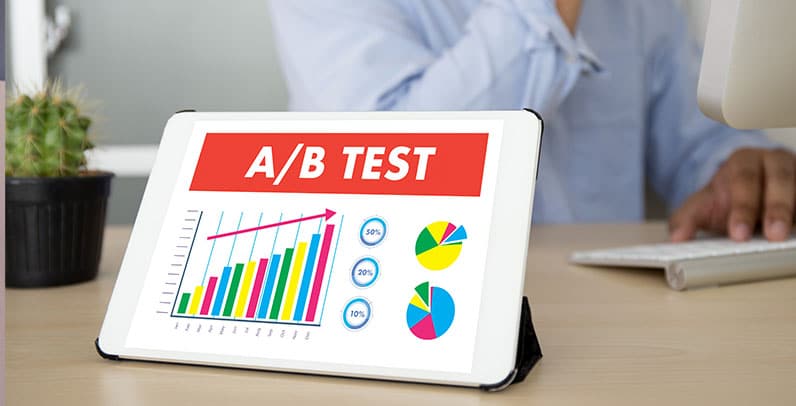
Here you have two options. You can test your existing ad with another ad, change just one element. Or, the other option is that you create two new ad versions. But, only one ad component differentiates one from the other.
This would depend on whether you want to test an ad that is already being displayed or you want to start a new ad campaign. Both options are worth trying. It would all depend on your campaign goals and testing goal.
4. Think of several ideas
Given the nature of A/B testing, it would be awesome if you tested more than average issues. Don’t take me wrong, you should go and test common ad elements like images, CTAs, and more. Yet, it would be great to get ideas from your team members and test less common aspects.
What I’m trying to say is that once you have run several A/B tests and checked common ad aspects, you can get a bit original. Who knows, you might find something which could help you reach your goal more easily.
5. Establish your testing timeline

Not surprisingly, you will need to decide on how long you want to run the test. But, be careful! If you run it either for too long or too short, the results won’t be accurate. Thus, it is critical you think of the ideal length.
How do you know that? You’ll need to allow enough time for a few thousand impressions. Otherwise, the data you can get won’t be significant. However, this won’t be possible with your PPC ads. It is up to you to decide here, and it will depend on your budget too.
6. Run the test
It’s high time you start running your A/B test. Whatever element you decide to analyze, you need to divide your audience among two groups. These need to be as homogeneous as possible.
Yet, to classify and segment your audience, you’ll need to consider aspects like their demographics, similar size, same medium, and more. Time matters too. Both groups need to be shown the two ad variations during the same amount of time.
7. Analyze and measure your results
When the test is over, it would be time to analyze and measure the test outcomes. There are two possibilities. Either the results are not conclusive. So, the test didn’t serve to reach a conclusion.
On the other hand, there could be a clear difference between the two ad variations. In this case, you should implement any necessary changes. But, as important as knowing what your audience prefers, it is to record these results.
Tracking the test data will serve for future trials. But, most importantly, it will serve for future ad designs. This way, you will keep on improving your ads according to your audience preferences.
8. Make necessary changes and start again with other feature

You will still need to carry out more tests. Audience groups change with time. So, your audience preferences will change too. Apart from that, just changing one element doesn’t necessarily have to make a great difference.
Depending on your advertising campaign goals and your A/B testing goal, you will need to put in place more than one test. This will help you understand your audience and the market better. And, luckily, to reach your digital advertising objectives.
How to measure the effectiveness of your digital advertising
Digital advertising is one of the key promotion strategies. You have to measure the effectiveness of your efforts to run successful ads. Not surprisingly, you’ll need to take some metrics into account and apply any necessary changes.
First of all, you must determine your advertising goals. Each campaign will have its own goals. Still, it’s worth considering there need to be short-term and long-term goals. Not all advertising objectives can be fulfilled in a short time.
Say you want to increase your brand awareness with your social media ads. It will take a while. That’s why it’s key you decide on your measurement time frame. That’s to say, it’s necessary you set a specific time to reach your aims.
Apart from that, you will need to record all your measurement data on a document. This will make it easier for you to analyze the results. And it will serve for future searches. All this sounds quite overwhelming.
Do not panic! There are tools at your disposal that can help you track data. You can take advantage of Google Analytics. But also Facebook analytics, Twitter analytics, and more. Each medium has its own analytics.
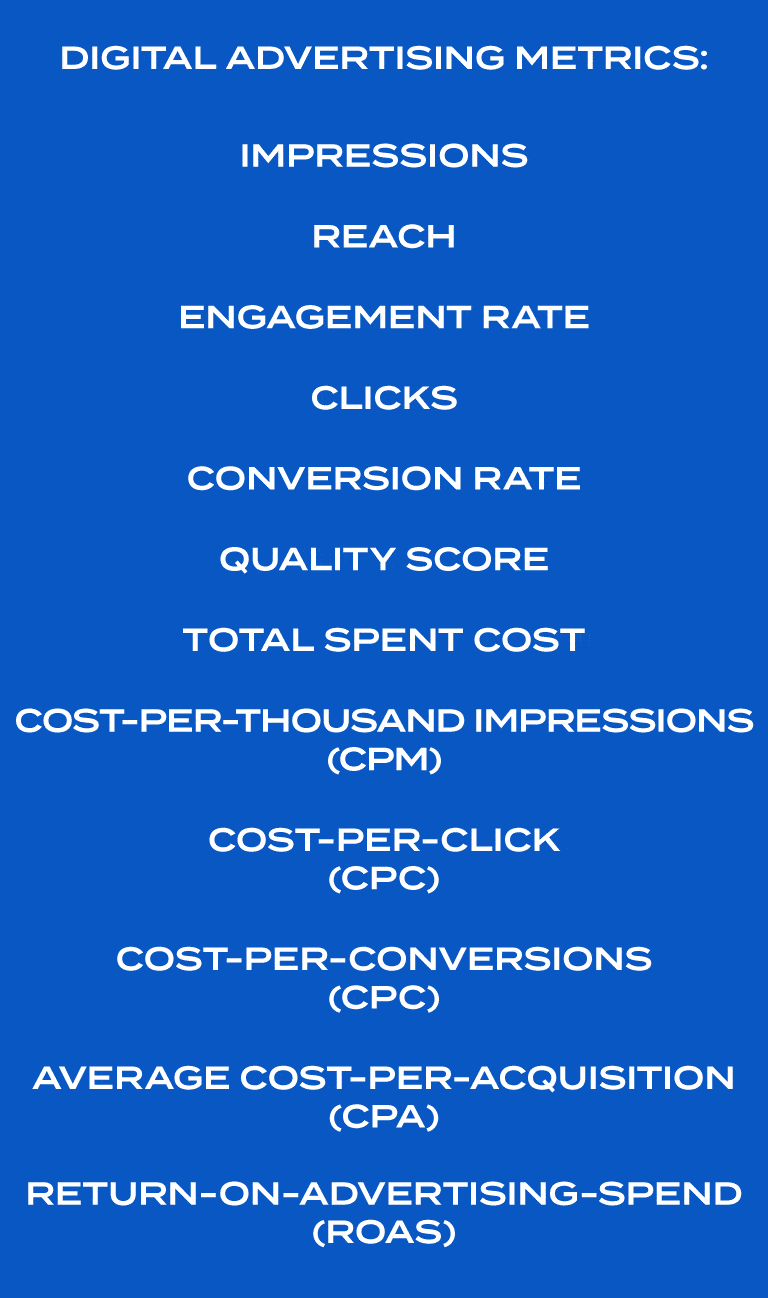
1. Know the right metrics for your advertising goals
Google shopping ads
- Impressions.
- Reach.
- Engagement rate.
- Clicks.
- Conversion rate.
- Quality score.
- Total spent cost.
- Cost-per-thousand impressions (CPM).
- Cost-per-click (CPC).
- Cost-per-conversions (CPC).
- Average cost-per-acquisition (CPA).
- Return-on-advertising-spend (ROAS).
All digital advertising metrics are relevant to gather information as regards your digital advertising efforts. Yet, depending on your goals, there would be some KPIs that you should focus on.
For example, if you aim at increasing your brand awareness, you should pay attention to metrics like impressions, CTR, and new users or visitors. But, if you want to boost leads, you have to focus on CPC, traffic, and conversion rate, for instance.
This doesn’t mean some metrics are more important than others. What it does mean is that depending on your advertising goals, you must center on some of them to get relevant data. Below you’ll find a list of the most significant KPIs.
2. Increase the visibility of your digital advertising
There are lots of ways by which you can increase your ad’s visibility. However, you should not annoy online users. When it comes to banner ads, many people have developed the so-called ad blindness.
So, to avoid it and make your ads more visible, you shouldn’t use too many above-the-fold ads. Indeed, it is at the fold ads which are more generally visible to online users. Similarly, ads that are placed in unusual site places or within the content are more easily seen.
Moving on to social media ads, you must interact with each platform users. In this type of advertising, ads are displayed to segmented audience groups. So, it’s mandatory that you know your audience and their preferences.
You can also increase your brand’s visibility thanks to followers, for instance. It is significant to mention the importance of blogging, backlinks, posting content frequently, and more.

3. Improve the engagement
Engagement can be improved through several methods. But, if you want users to interact with your ads, you have to offer them something valuable. Not to mention originality. Besides, asking questions or running a contest are extremely valuable too.
It is worth taking the time to respond to comments, whether they are positive or negative. You can keep track of your social mentions too. No matter where they come from, feedback and reviews can help you improve your relationship with online users.
And that’s all for digital advertising testing and measurement. Now, you know what and when to run A/B tests. And, you are ready to measure the effectiveness of your ads.
Conclusion
Now I would like to hear from you!
I hope this online advertising guide has been useful for you. I’ve covered from the basics to more advanced techniques. It’s high time you put all my tips into practice and succeed!
Now I would love to hear from you!
Which channels do you find more useful as regards your audience?
Which of my tips did you like the most?
Let us know by leaving a comment!

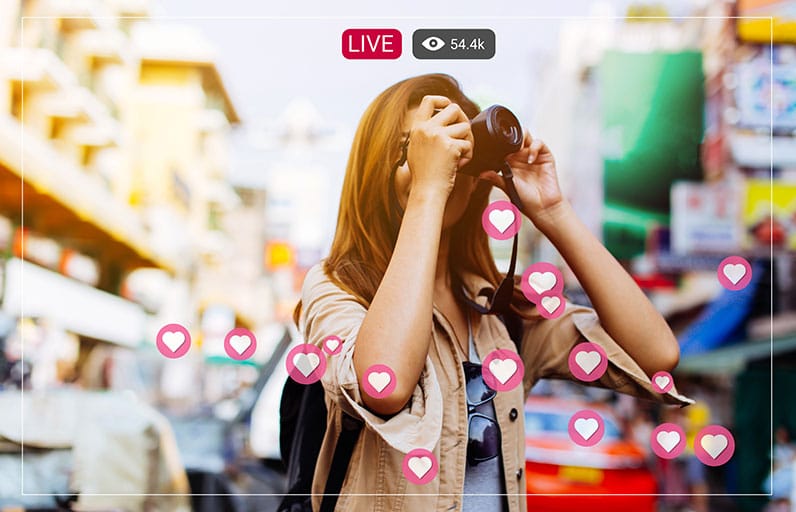
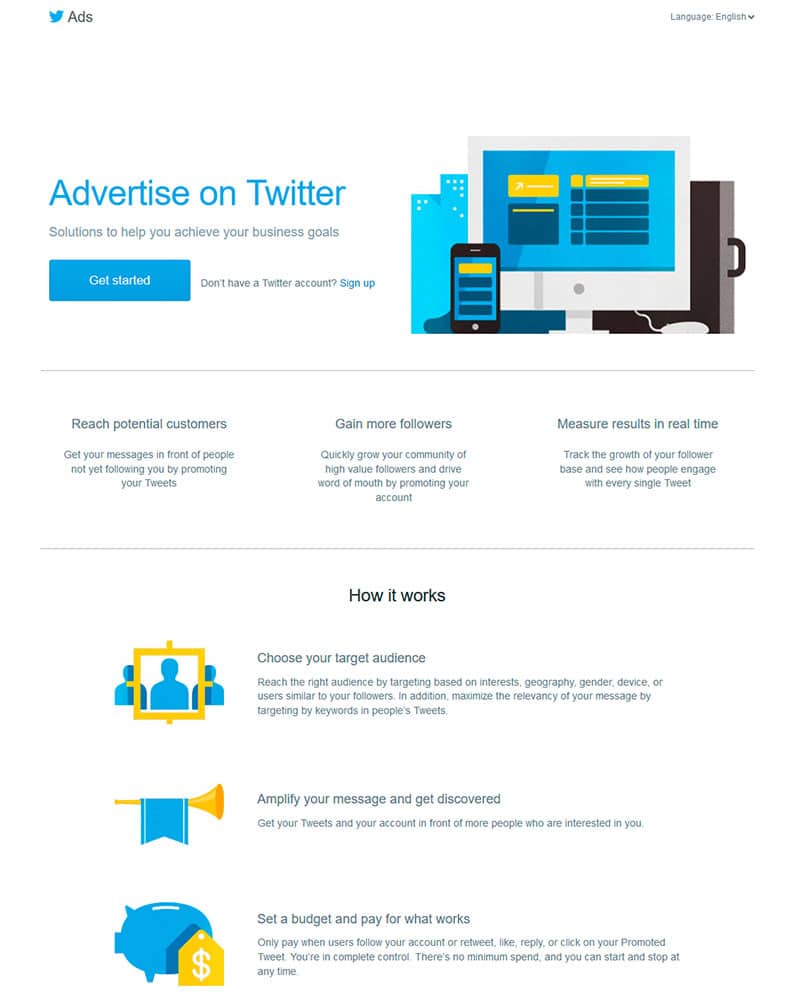

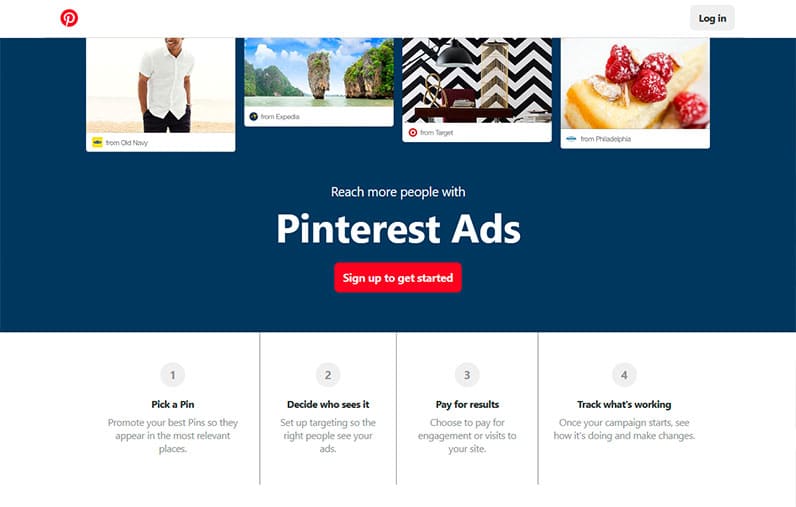
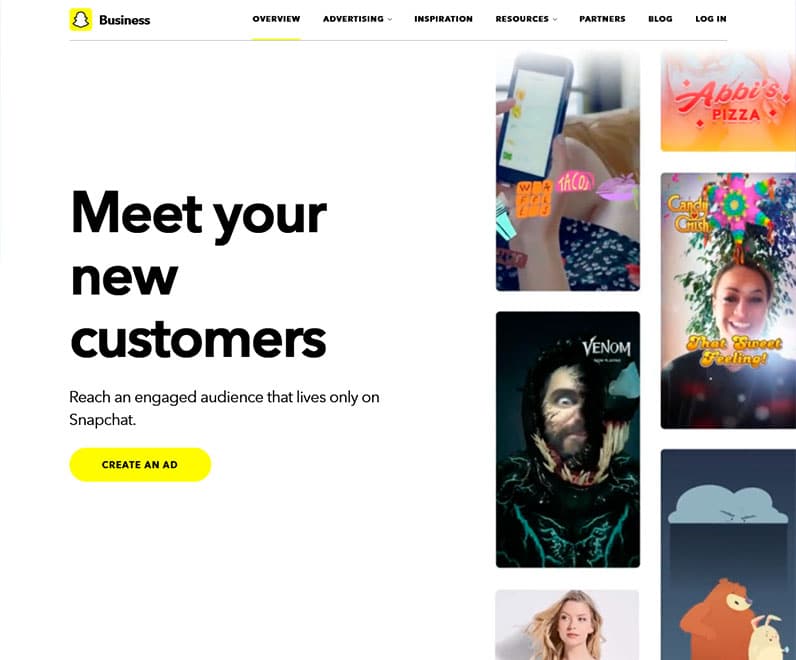

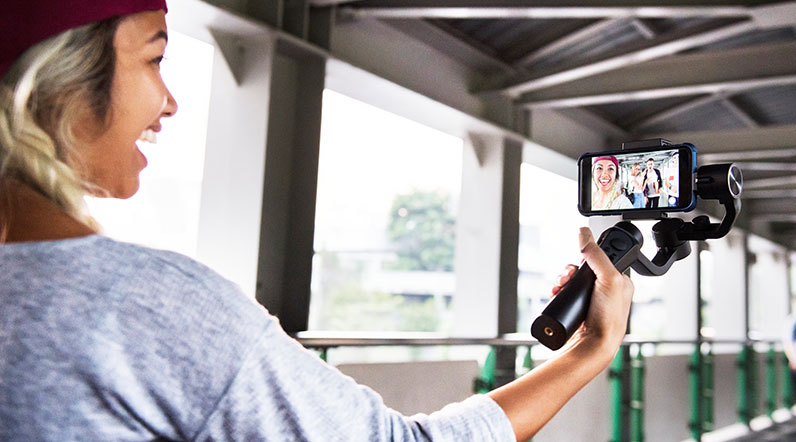




Thank you for this content!
Thank you, Michelle. I’m glad you liked it! 🙌
Great read regarding an overview of digital advertising as well as its benefits for continued business success. Thanks for this.
Thanks a lot, Logan! We’re glad to have you onboard and will continue working hard on providing fresh content Stay tuned for more!